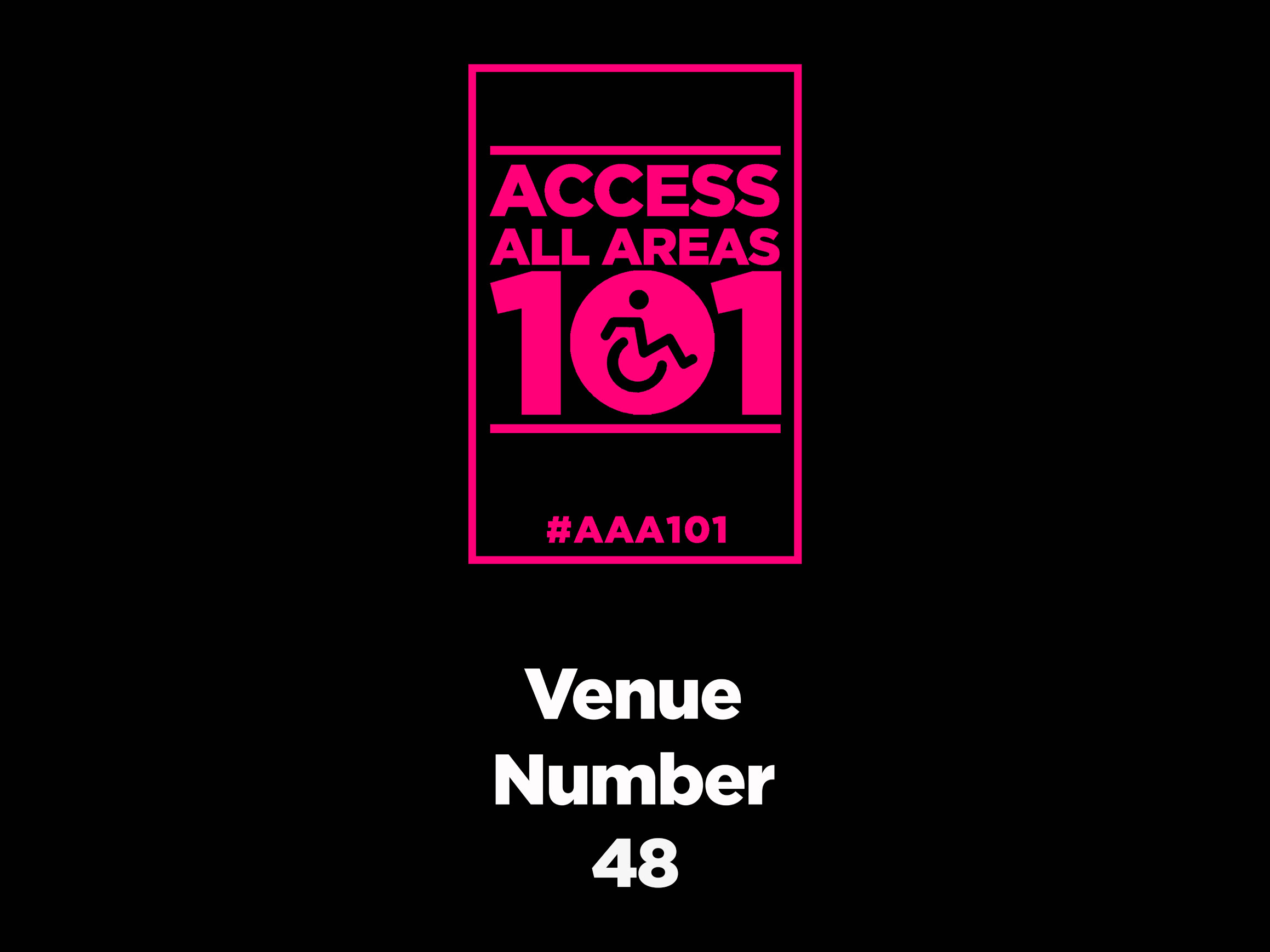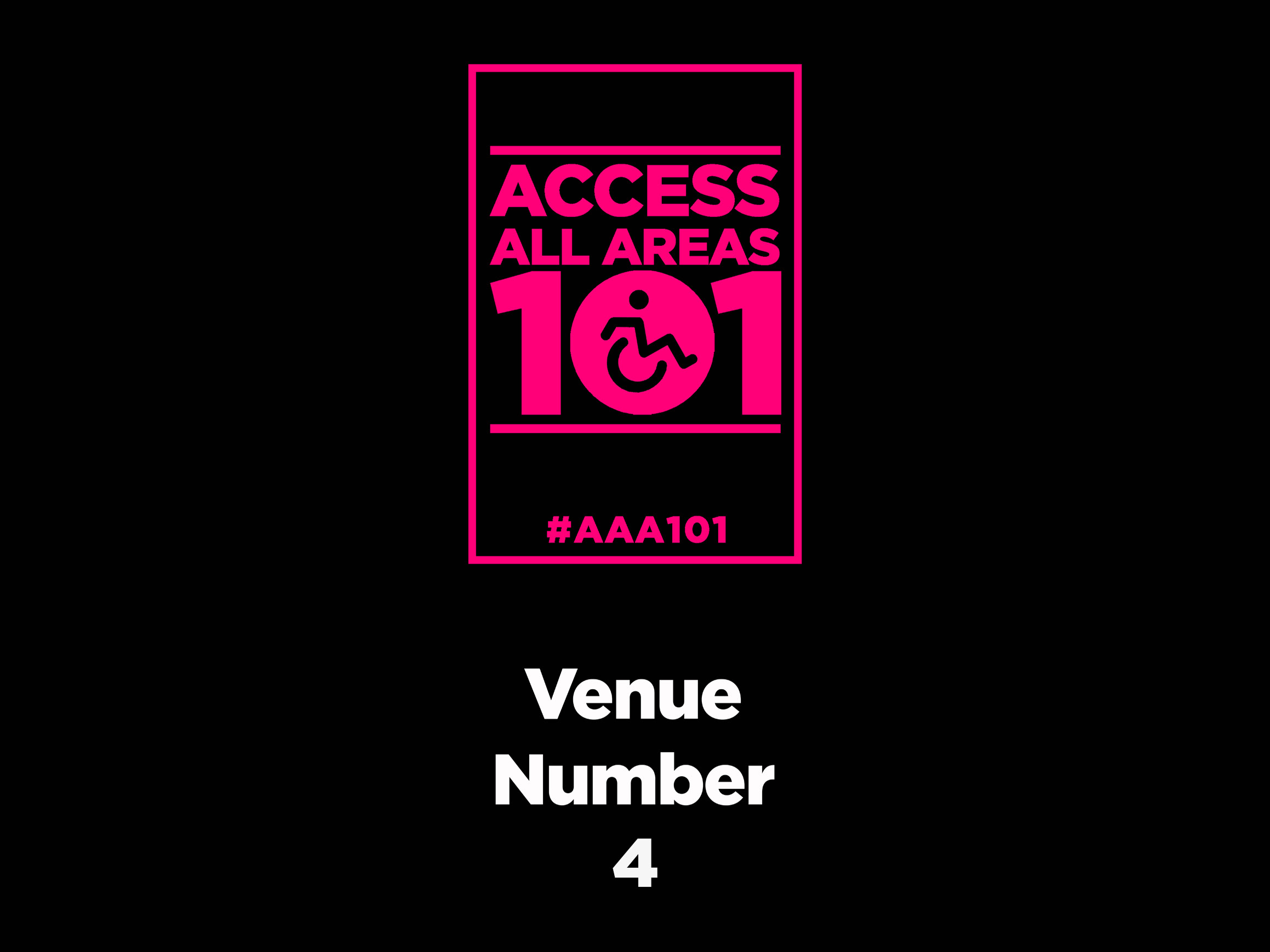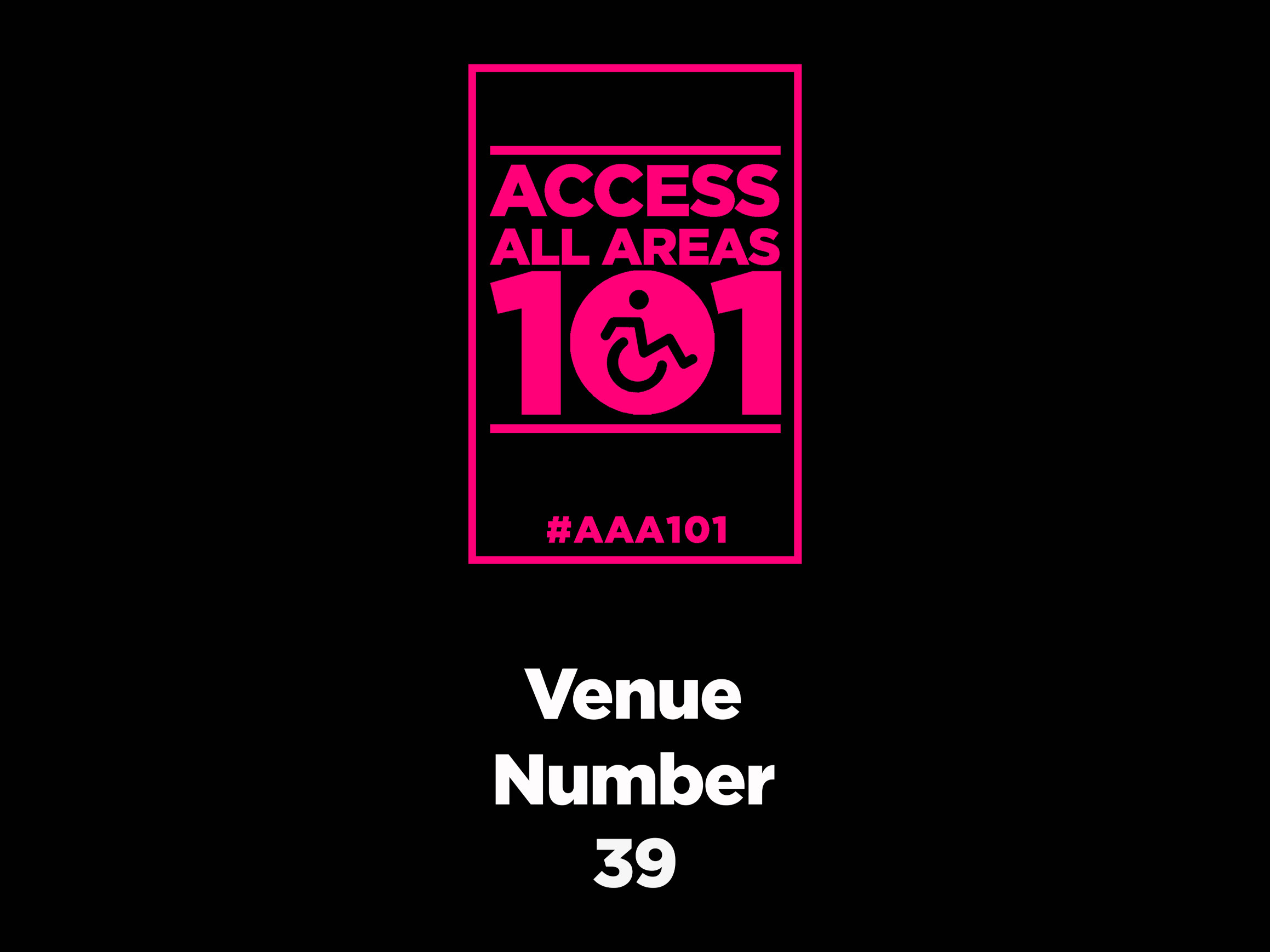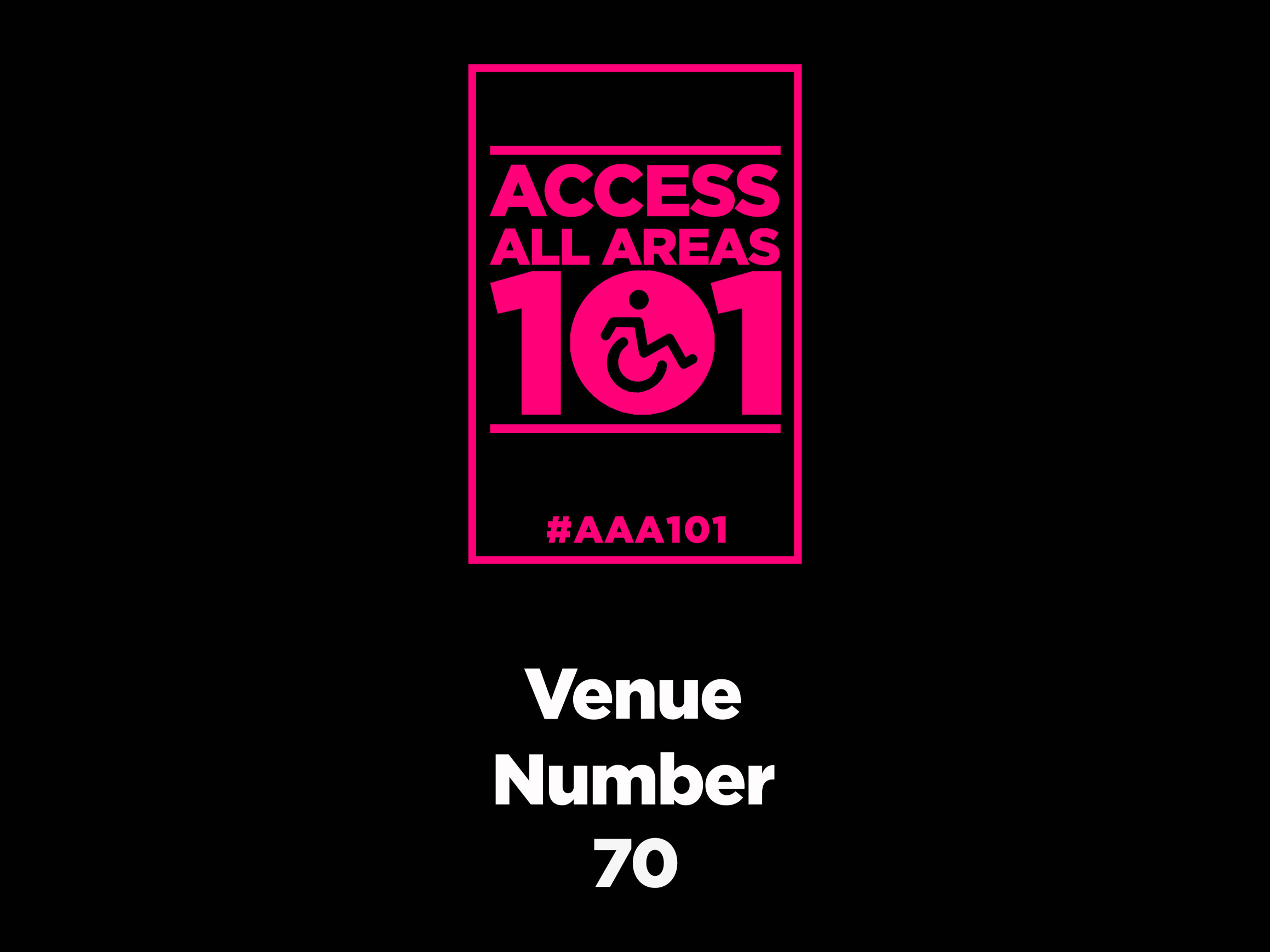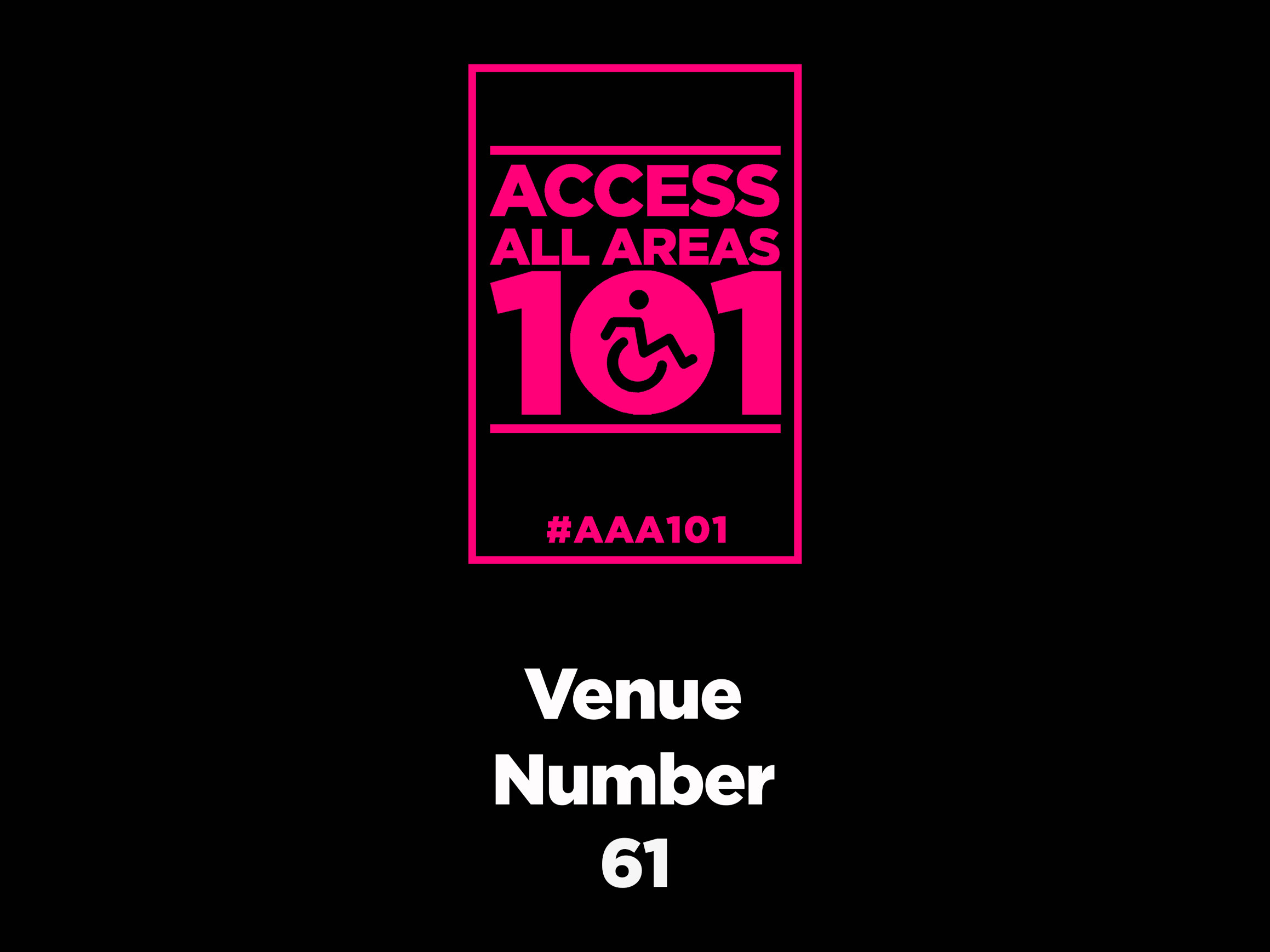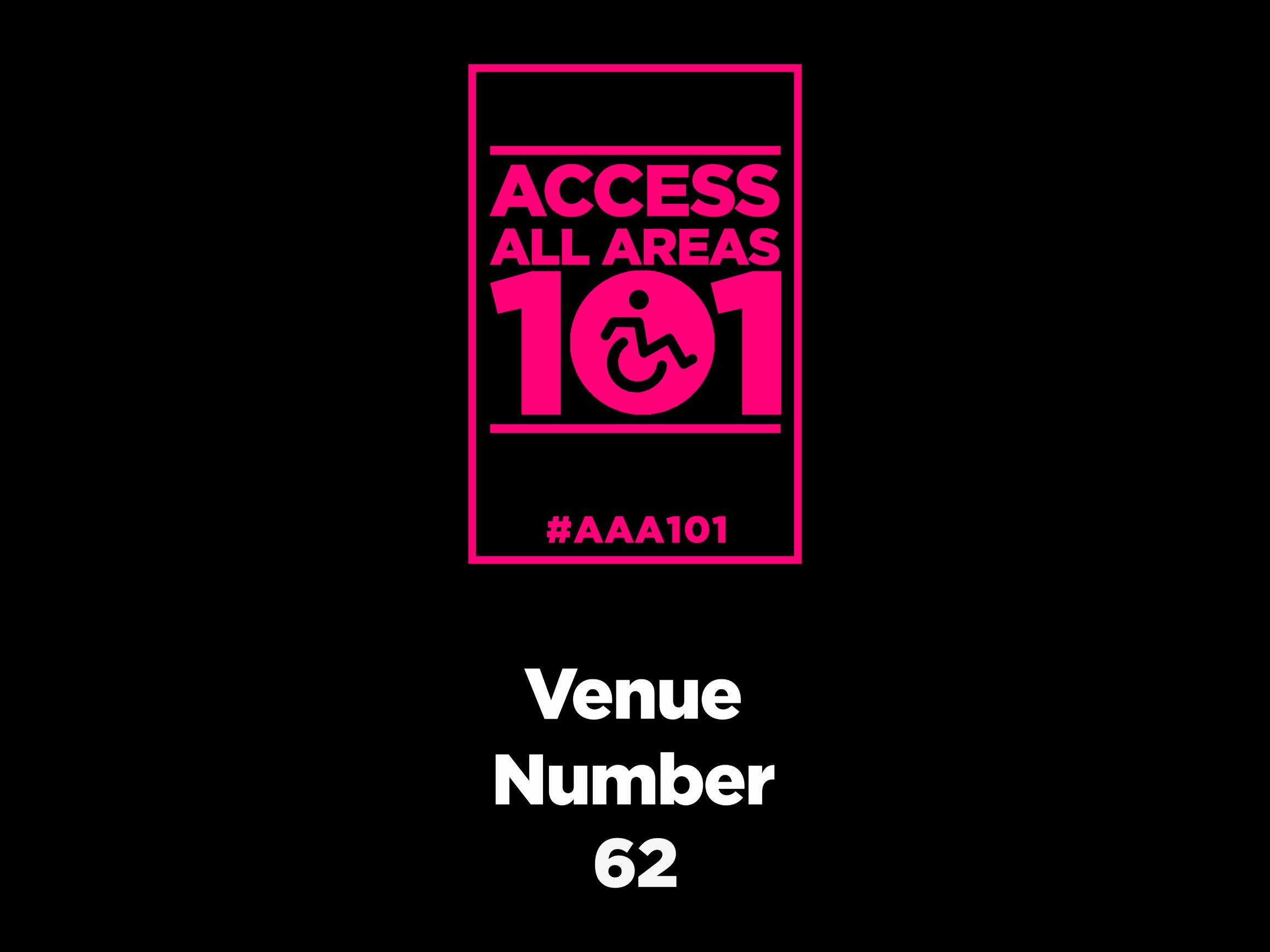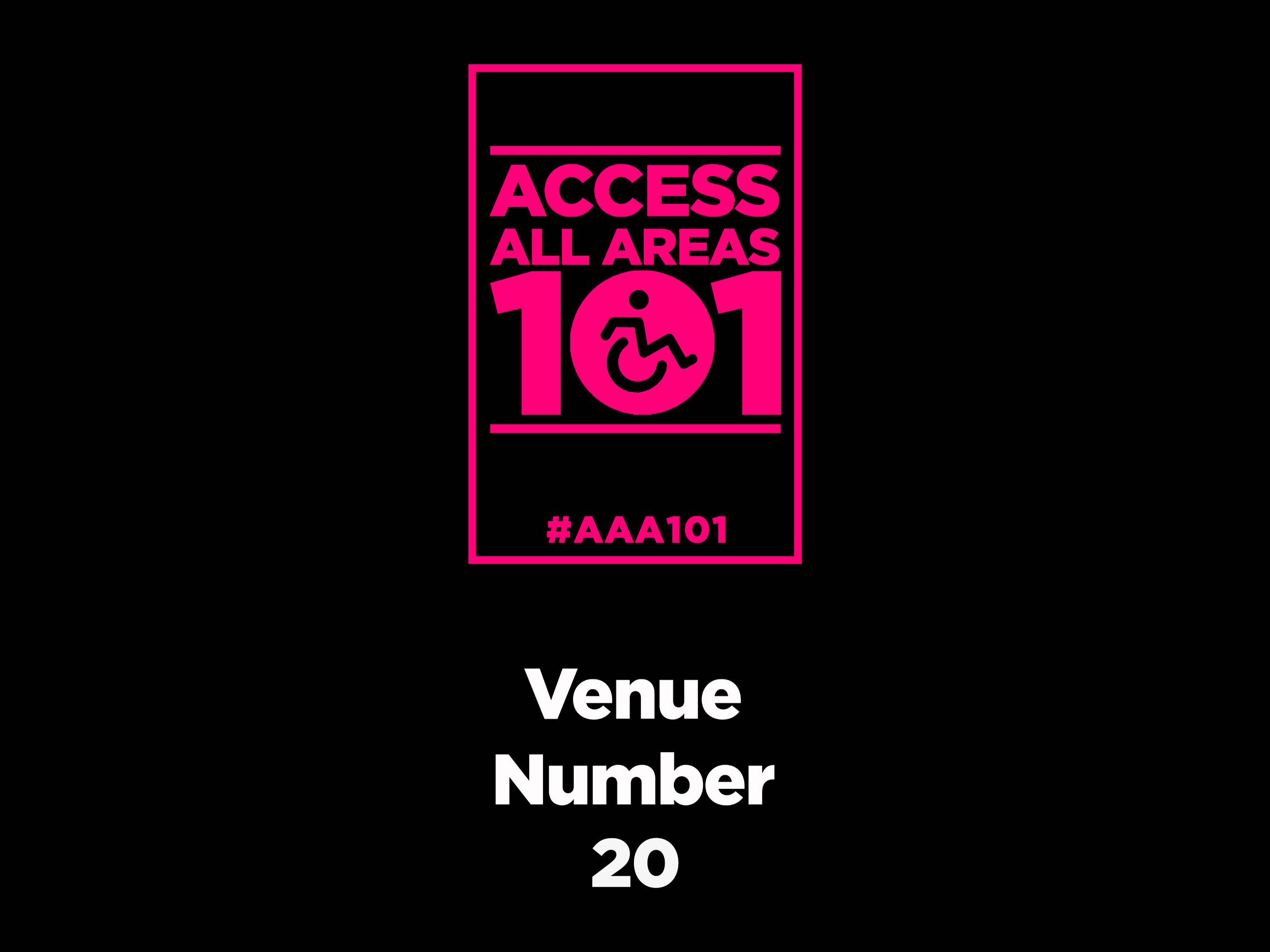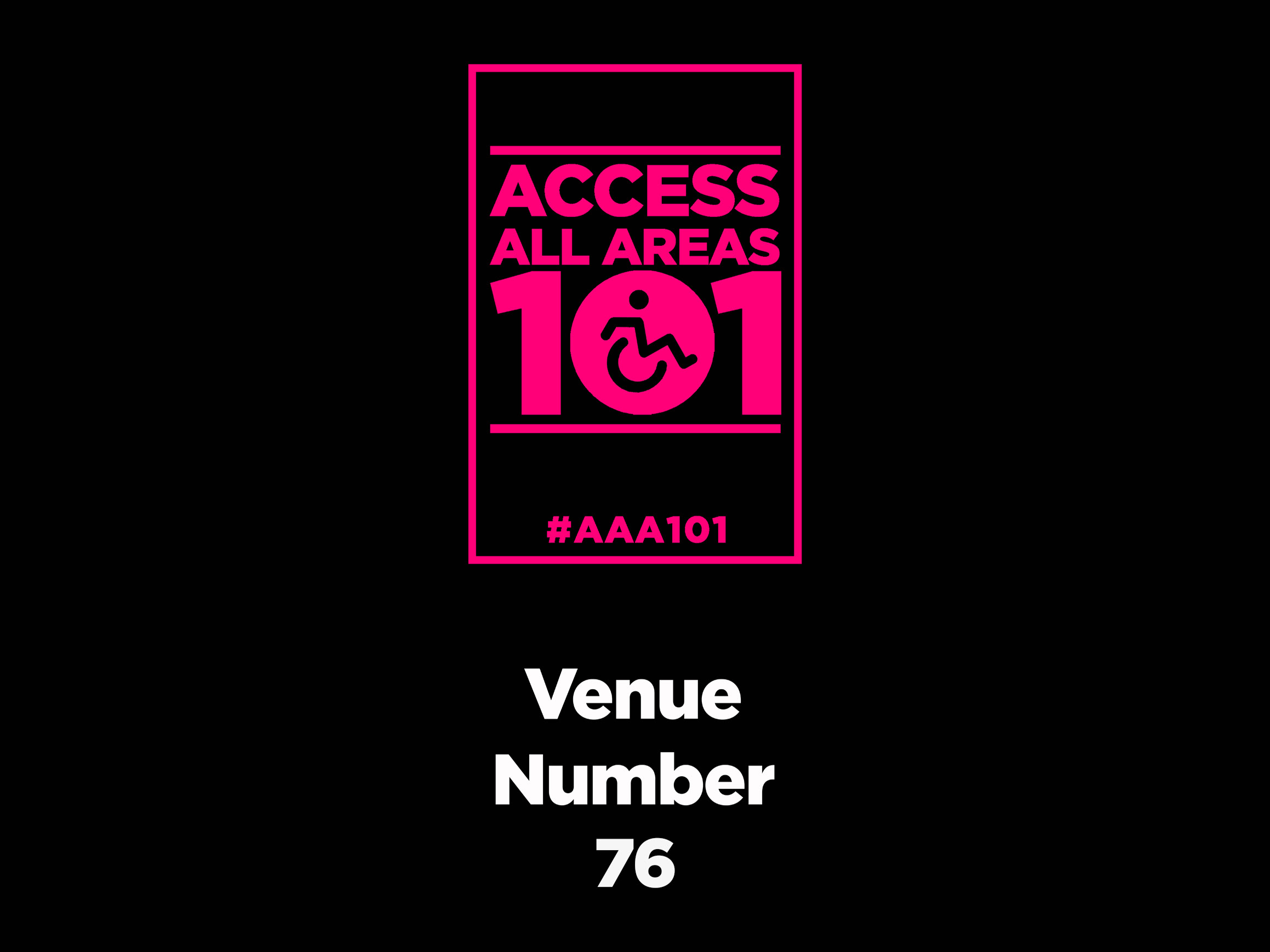The Tyne Theatre and Opera House is a Grade I listed building, opened in 1867 in the heart of Newcastle Upon Tyne. With a history sprinkled with a change of use to a cinema and being ravaged by fire, this beautiful building has limitations for accessible upgrades, but credit to them for making an effort. Let’s see what you think!
BOOKING
Accessible bookings are made directly with the box office over the telephone. The staff can then recommend which seating options are best for your requirements, and they can arrange a complimentary companion ticket for you.
If you cannot make a telephone call, you can email the box office directly, and they'll be able to assist you.
The theatre's website has a clear seating plan to see where the seats you've been offered are located within the auditorium.
Due to the building's age and nature, accessible seating is very limited. There is only space for four wheelchairs, but other step-free options exist. Legroom is limited in many parts of the theatre, but if you have specific requirements, the box office staff are knowledgeable and can give you all the information you need.
Once I'd booked my tickets over the telephone, they were emailed to me in PDF format so I could show them on my mobile device at the door.
I received an email the day before the event with all the access information and contact details I might need.
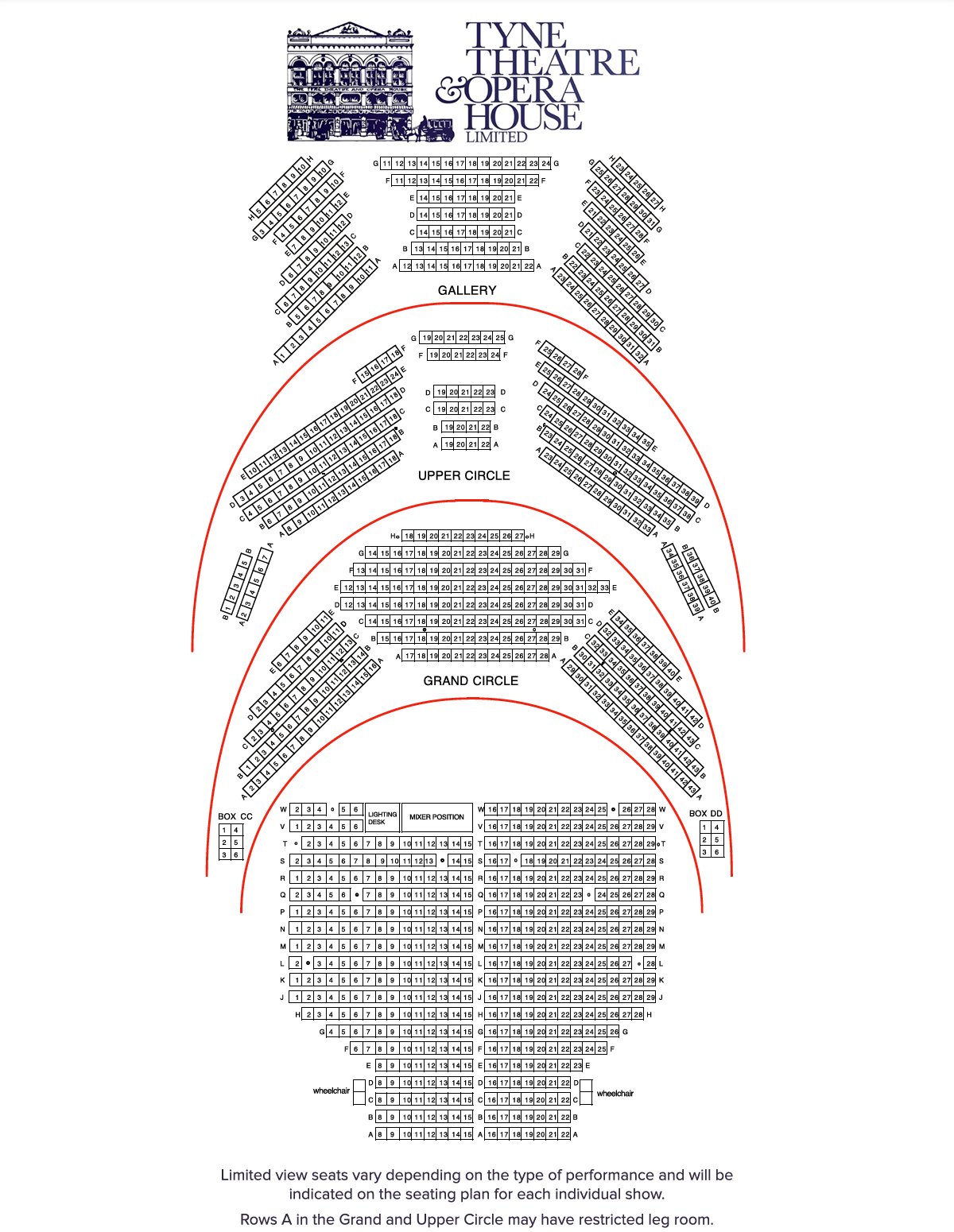
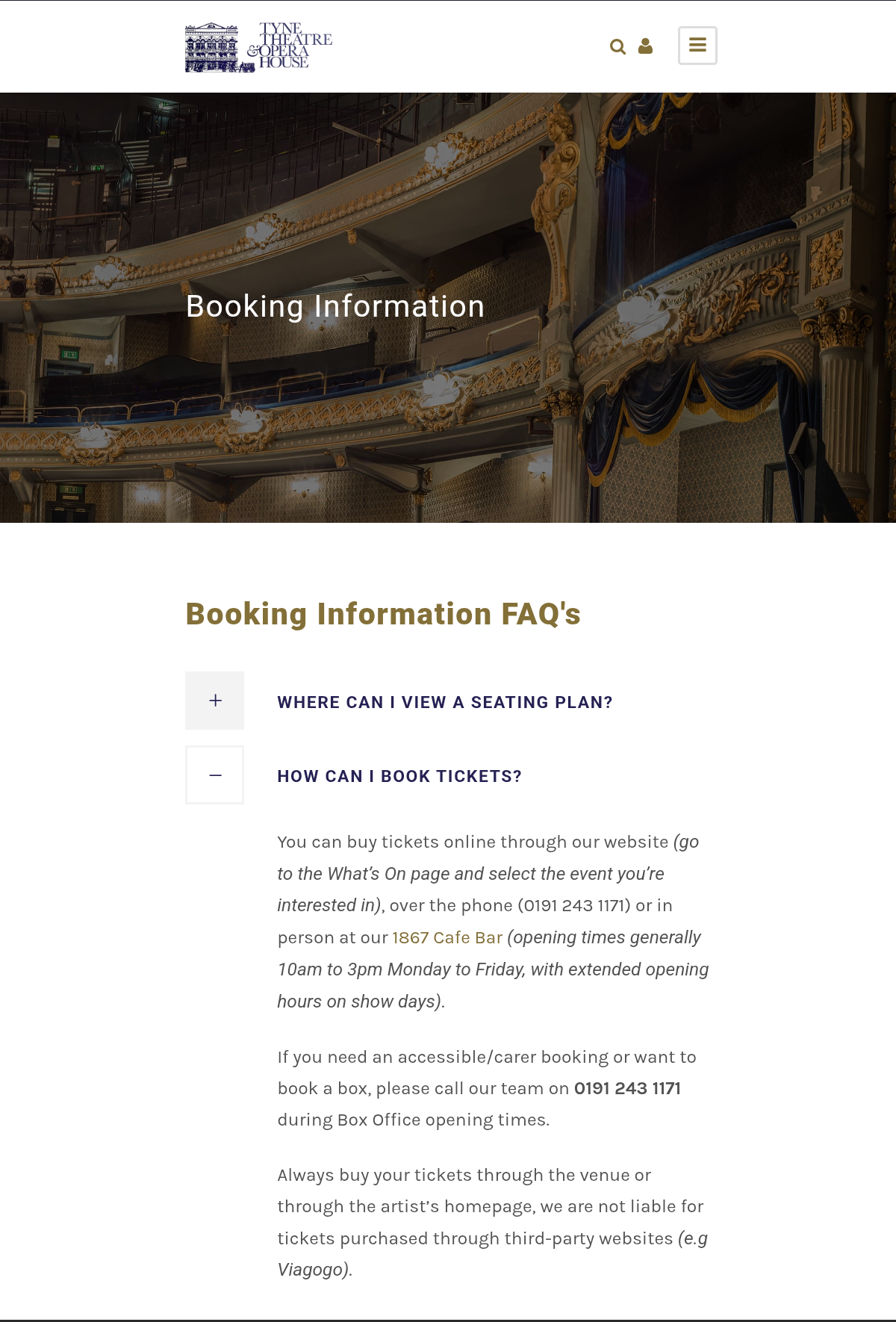
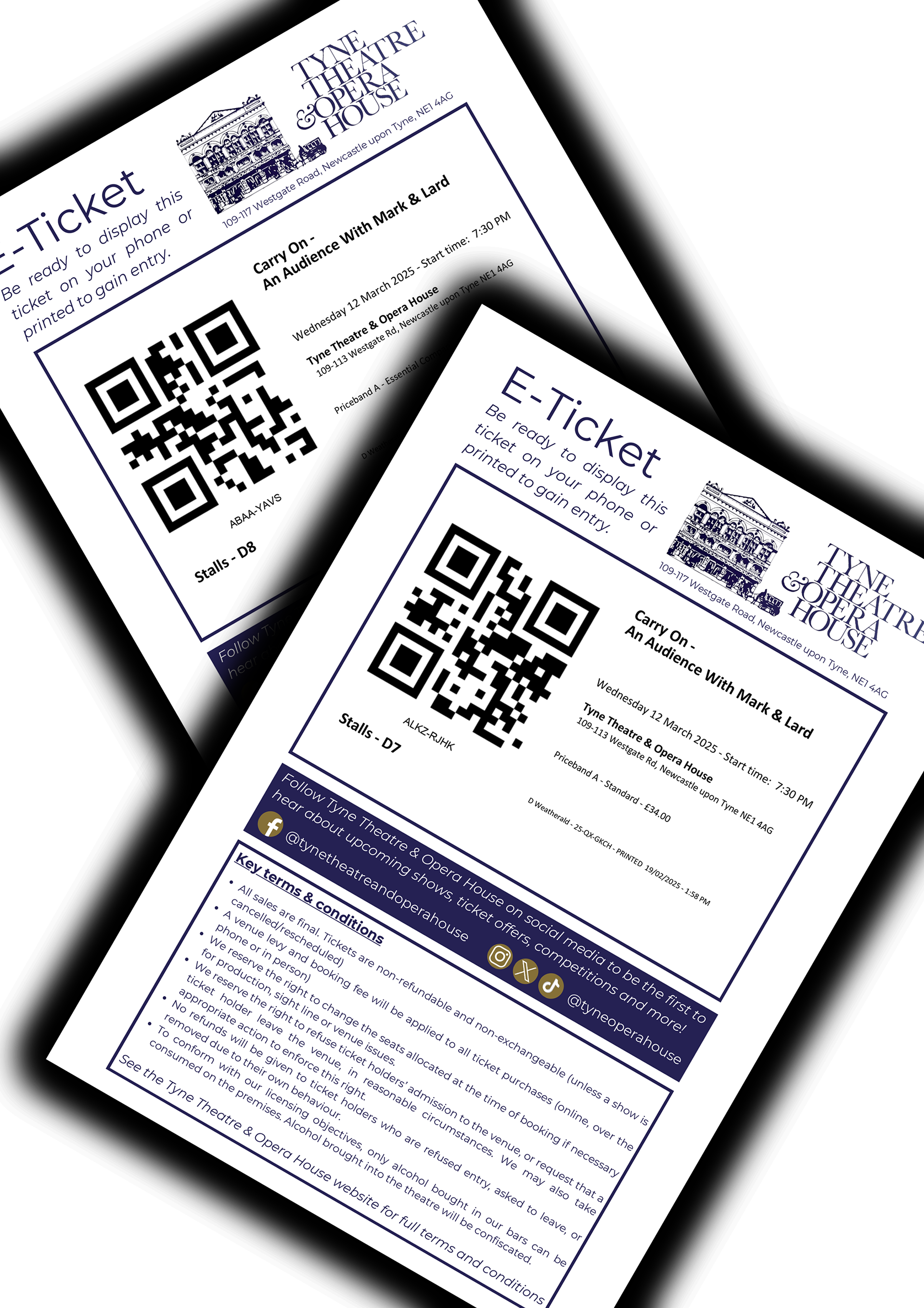
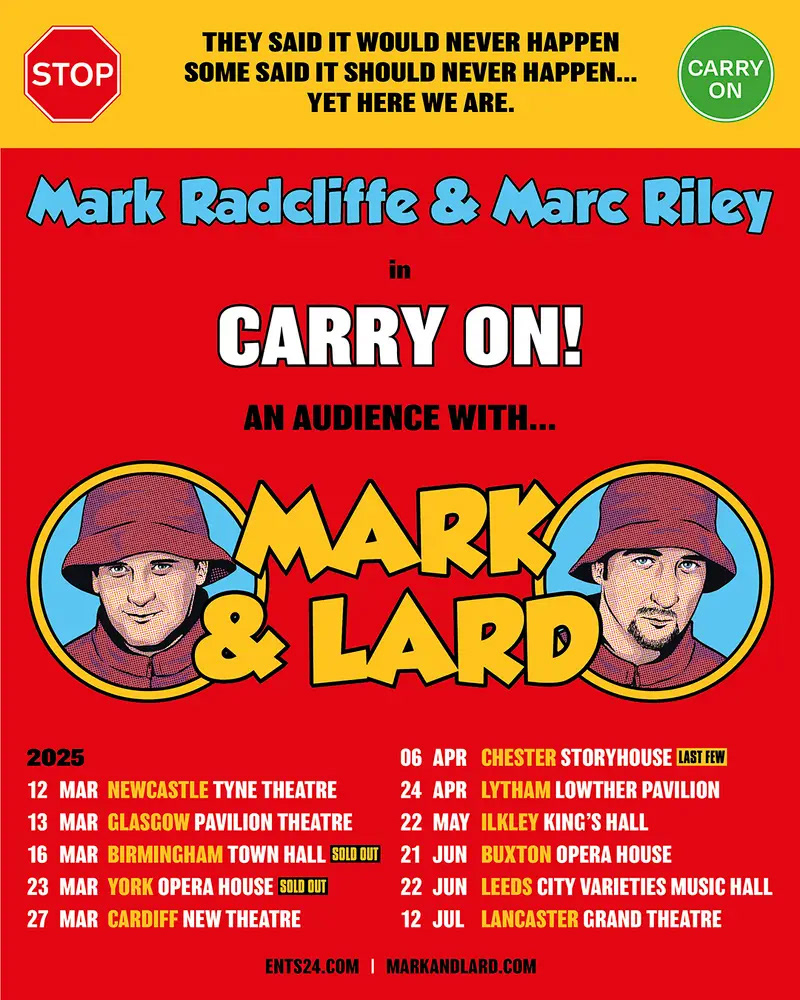
LOCATION AND GETTING THERE
This beautiful old theatre is located on the very edge of Newcastle’s bustling city centre. Just a few minutes' walk or roll from Newcastle Central station on the East Coast main line and a range of hotels nearby, it offers brilliant links to other areas of the UK.
The Tyne and Wear Metro service stops nearby at Central and St James’ stations, linking the city with Newcastle International Airport and the North East coast. Many bus routes also stop at Central Station, and a National Express station is nearby.
The roads around the theatre do get busy as it’s so close to the train station, city centre, and St James’ Park. There are also several one-way streets in the area. It’s always worth checking if Newcastle United have a home game when you’re planning on visiting, as parking and traffic volume are seriously impacted.
There are some accessible Blue Badge parking spaces on the streets around the theatre and a lot of general on-street parking. Parking with a blue badge in Newcastle City Council on-street parking bays is free and unlimited. However, please check the local signage and be aware of loading bays and taxi ranks, which have additional restrictions.
The Grainger Town car park is also nearby and has 12 accessible bays. Parking charges are payable for disabled badge holders in both disabled and pay-and-display bays.
Blue badge holders get a one-hour grace period beyond the expiry of the paid-for session, and it’s free after 7 p.m. For example, if you arrive at 5pm and pay for one hour of parking, 6-7pm is your grace period. It’s free after 7pm, so you can arrive early and go for something to eat and only pay for one hour!
I must warn you, though - this car park does not suit larger vehicles. If you are a very confident driver with a large car, you’ll be fine, but I wouldn’t recommend it if you’re a bit cautious - the exit is very tight and narrow, and there are a lot of paint scrapes visible on the walls!
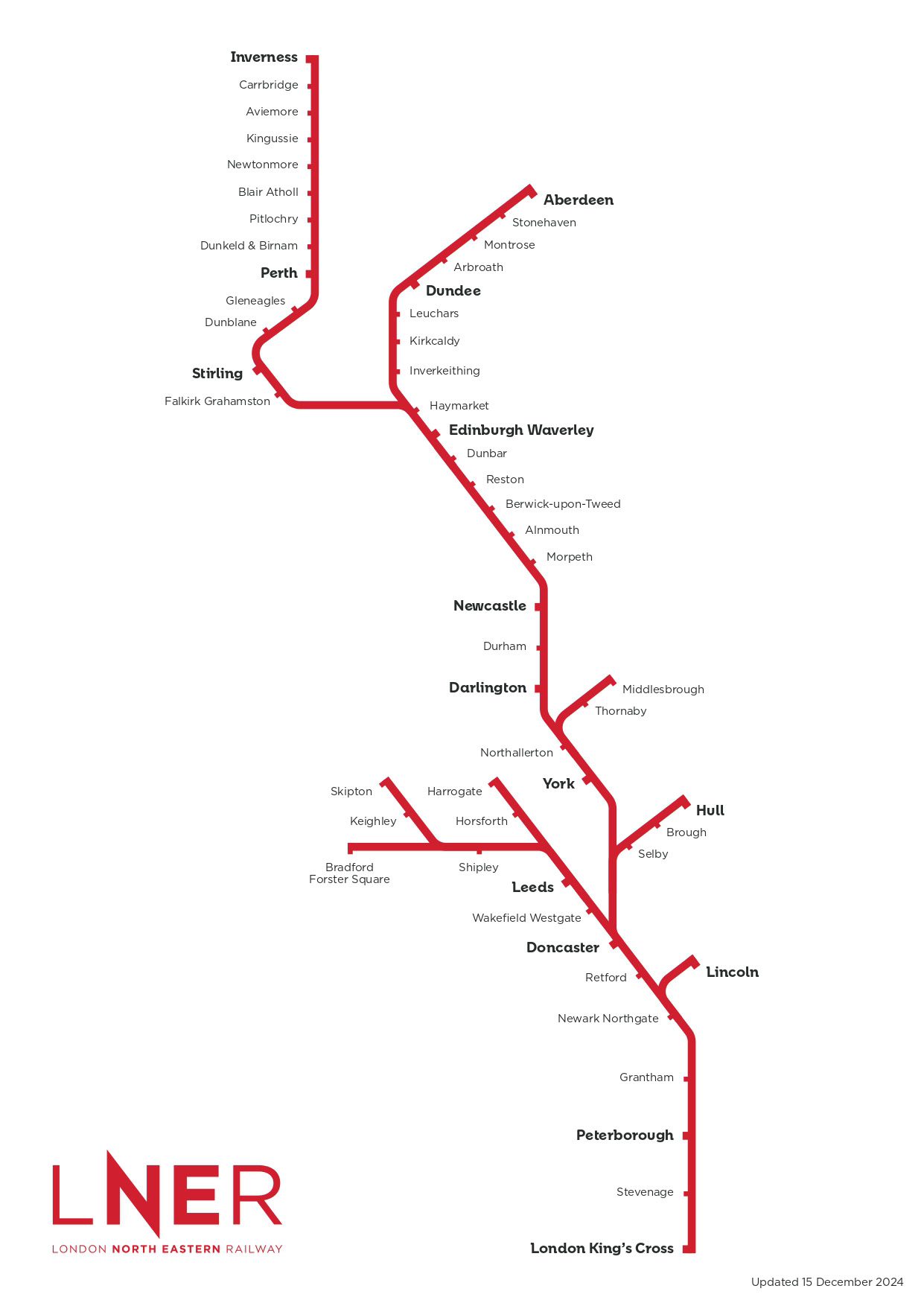
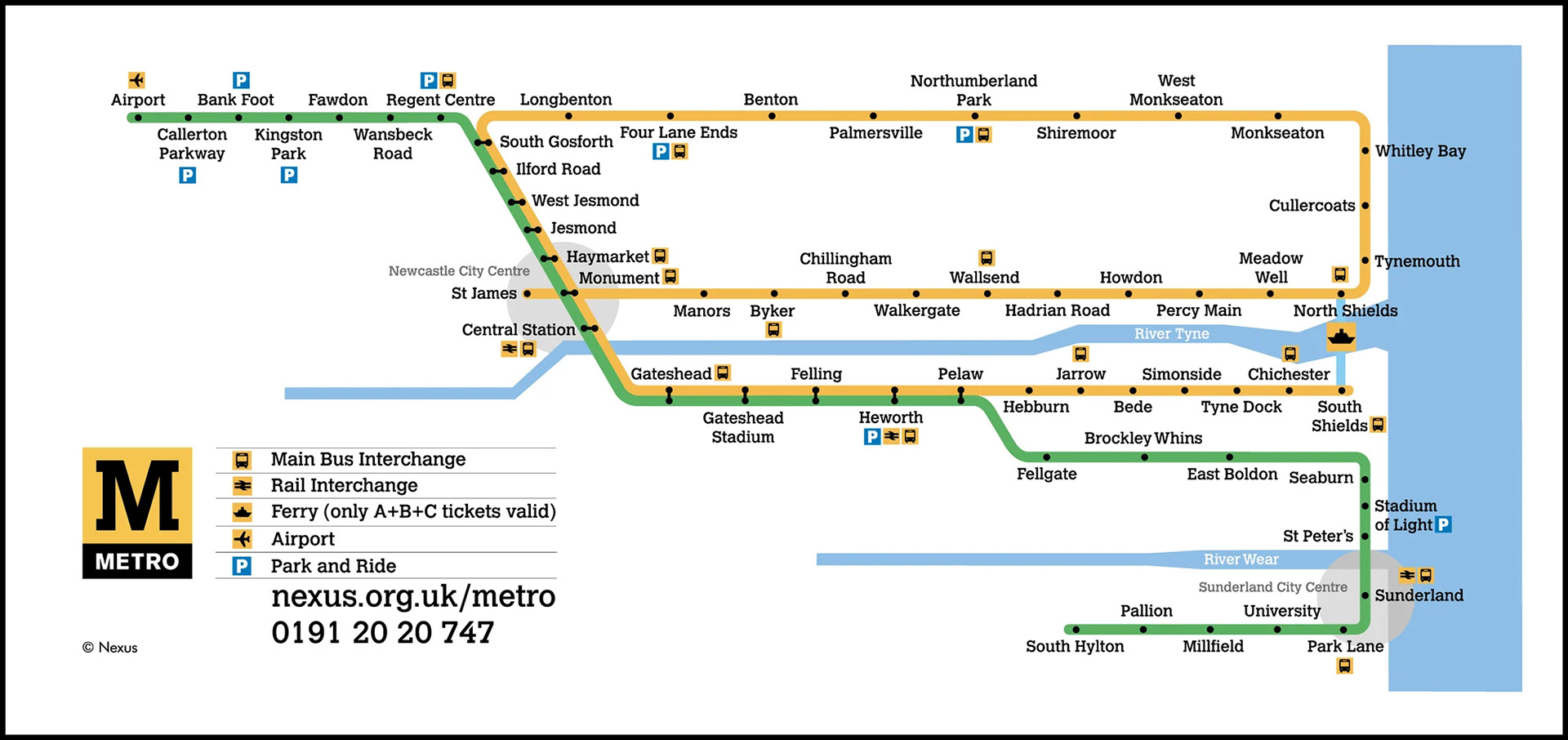
GETTING IN
The road on which the theatre is situated slopes slightly downwards, meaning the main door to the foyer, box office, and merch desk has a step up. Looking at the front of the building, the door furthest to the right is marked above as an accessible entrance and is step-free. Staff at the door will open the large doors for you and help you up the slope into the foyer if needed.
The foyer is small, with the box office counter in the left-hand corner and the merch desk backing onto the front of the building.
The box office counter is very high, and while the merch desk doesn’t have a lowered counter, it is low enough to use and view the items on offer.
The only step-free route from the foyer into the building is through the auditorium. If the auditorium doors are already open (about 30 minutes before the performance), you can wheel straight through to either your seat, the toilet, or for refreshments. If the doors haven’t yet been opened, staff members will escort you to the bar area through the auditorium. The other route to the bar from the foyer includes six steps down, bypassing the auditorium, allowing easy access to the bar and cafe for non-disabled people.
The auditorium, being such an old building, has a traditional carpeted raked floor (it slopes down towards the stage), which is easy enough to wheel down but not so easy on the way back up.
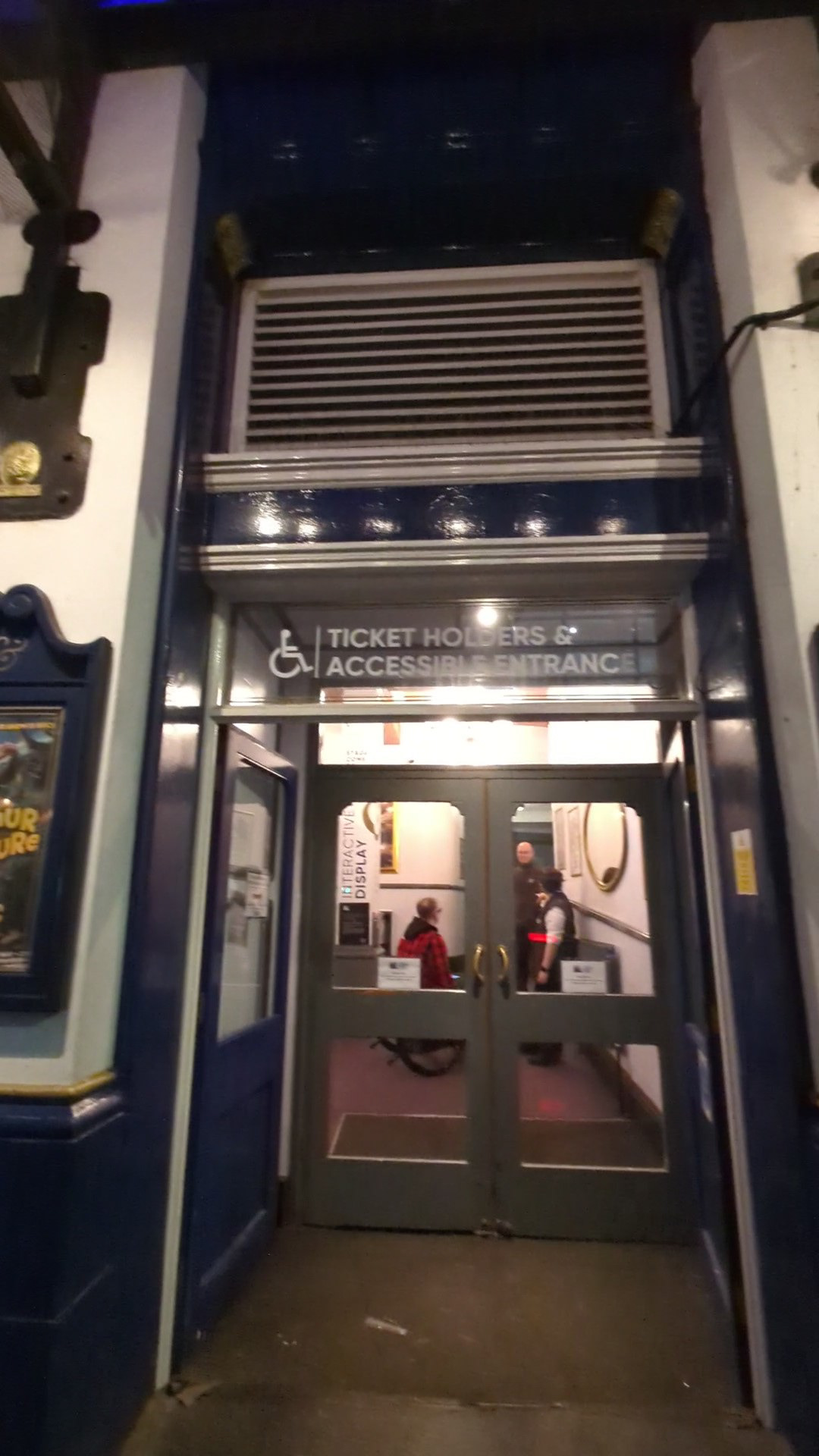
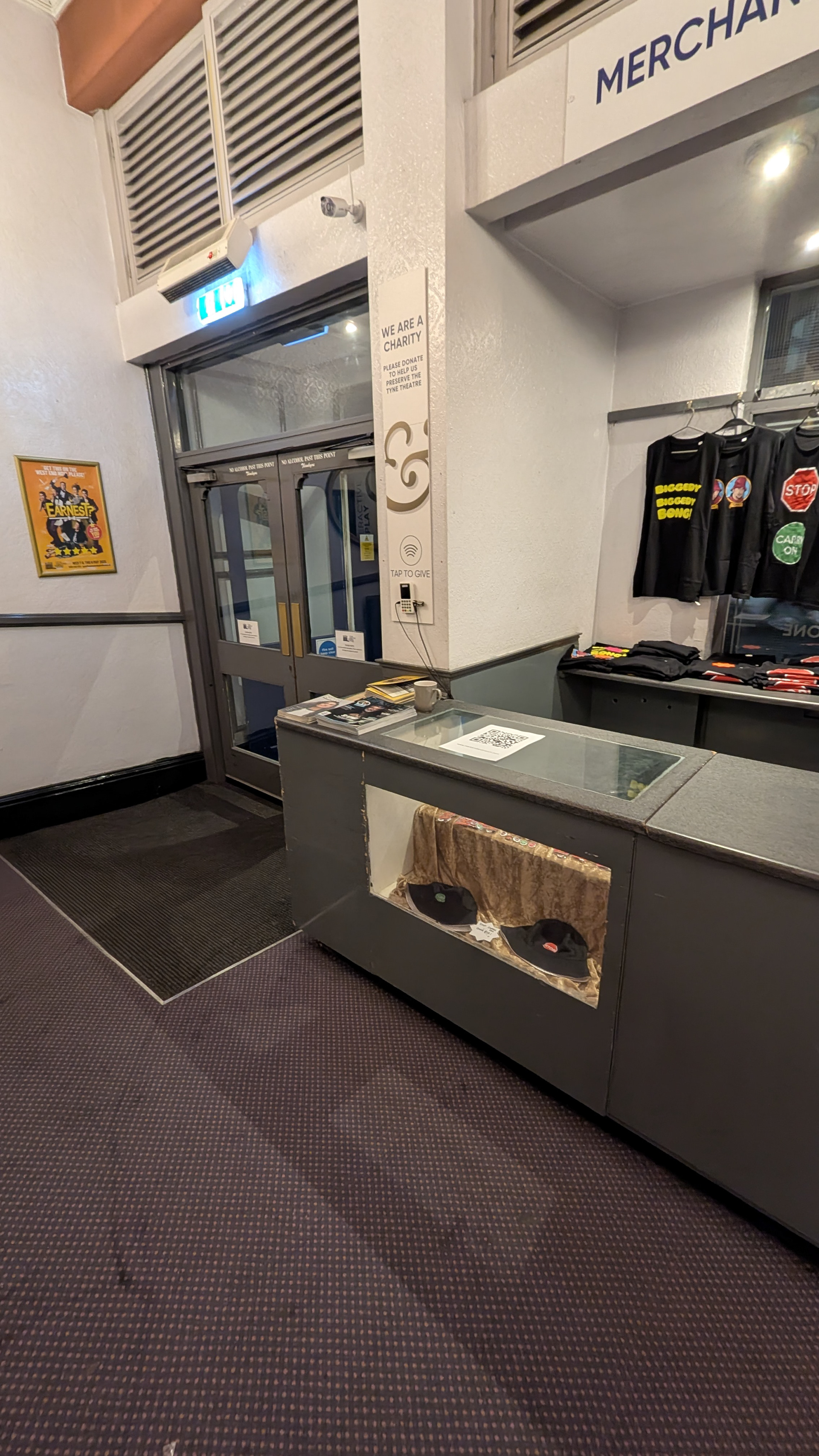
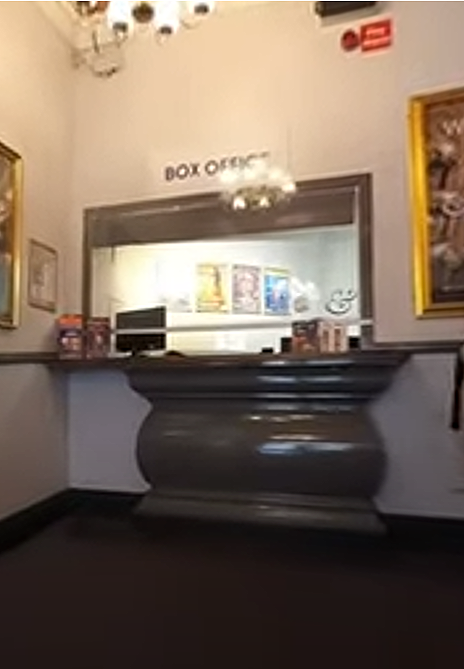
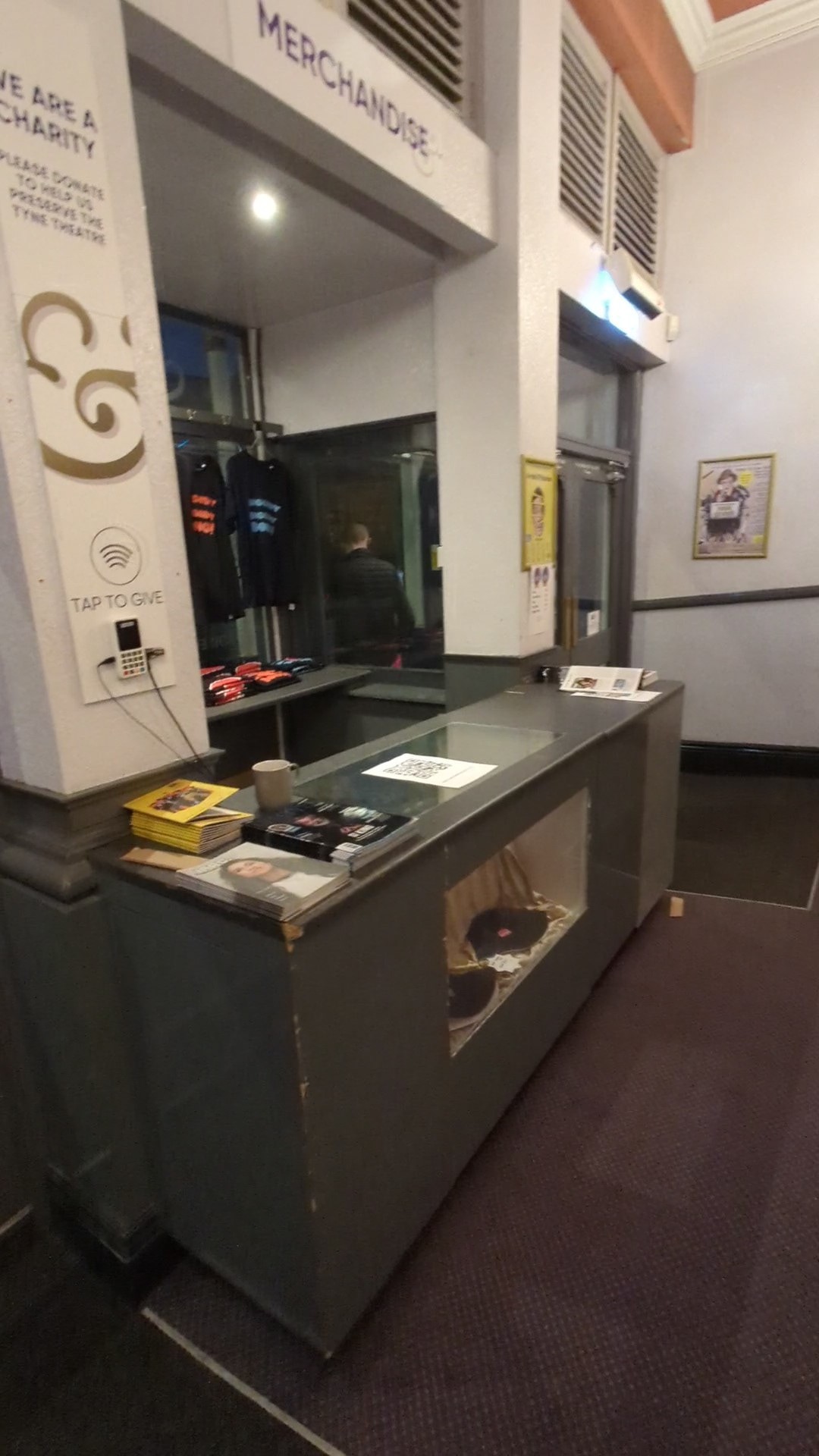
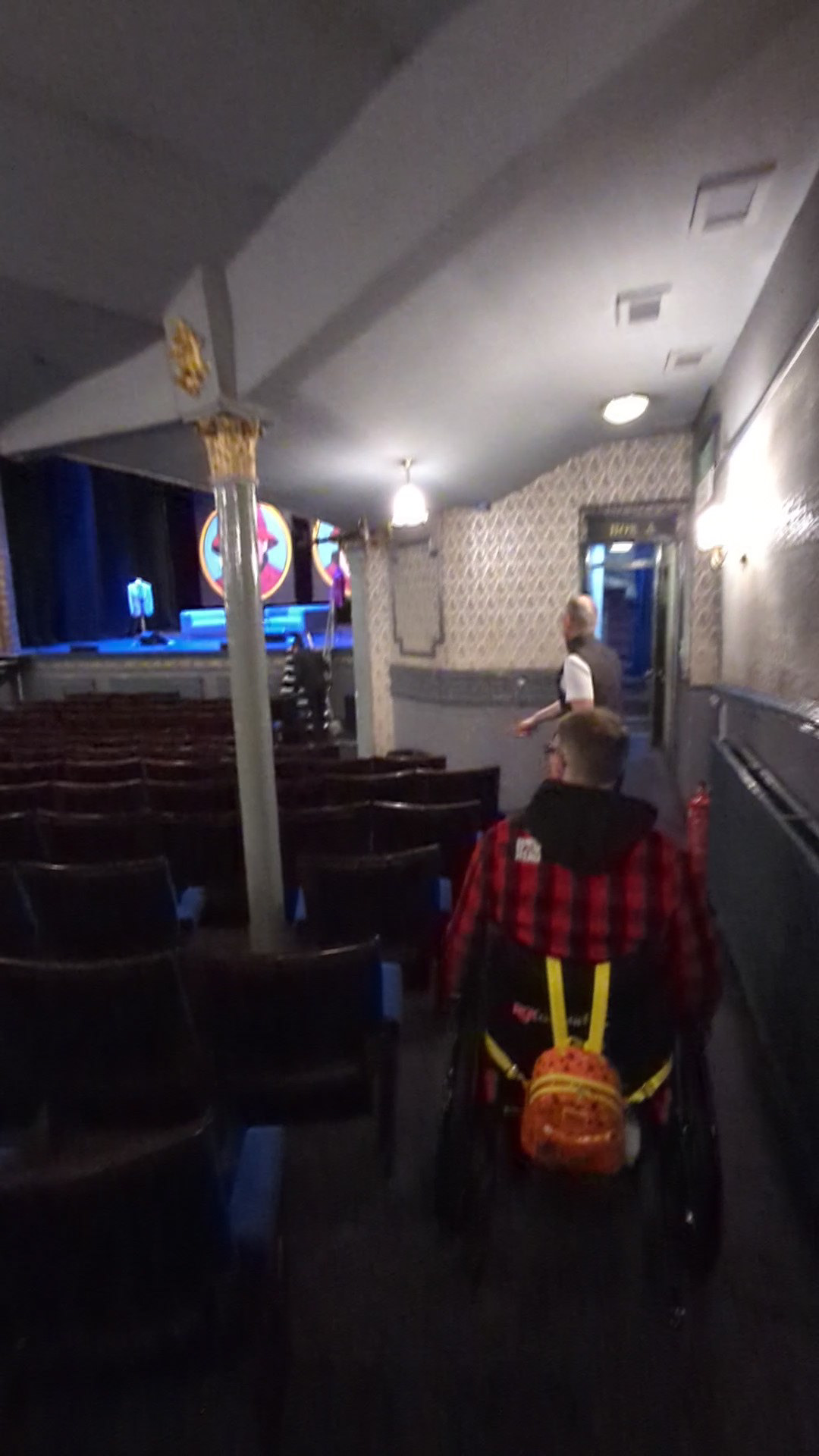
FACILITIES
The theatre has a large bar area (revamped since our last visit), a smaller cafe bar (a new addition since we last visited!), and a small limited-stock bar, all on the stalls level. There are also additional bar facilities on each of the other floors. During the interval, ice cream and crisps are also on sale in the auditorium.
The way to the bar from the auditorium is step-free via a ramp, avoiding three steps and a slight carpeted slope up to the door. There’s almost a small lip where the slope joins the solid floor of the bar, which isn’t very noticeable by the eye but is a minor trip hazard. We watched a few people stumble over it, and I certainly felt it as I wheeled over it.
Most of the seating was removed when the main bar area was recently revamped. The floor is smooth, so you must be aware of spilled drinks. The bar serves alcoholic and soft drinks as well as snacks, but as a wheelchair user, I was unable to use the bar myself. Bottled drinks were displayed in fridges behind the bar, below the height of the bar, and the bar itself was very high - chest height for a standing adult.
The bar has a large TV screen advertising upcoming events at the theatre. They have a vast selection of comedy, theatre, pantomime, and musicals to suit everyone, including some very high-profile names and faces off the television.
There is also a wall plaque commemorating the opening of the new bar facilities.
The new cafe bar has a selection of alcoholic, soft and hot drinks, but doesn’t appear to be fully accessible. To enter the cafe from the street outside, there is a small step which many wheelchair users could probably manage. From the bar, however, there is a single step up to an open area with no seating, then a set of 4 steps up to the main seating area with a stair lift with no visible way of getting to step-free! There must be a reason why the stair lift has been installed here, but you still have to get up a step at either end of the cafe to get to the lift. Maybe we missed something, but Alison couldn’t see a way for me to get up there, and no staff members offered to help or advise us when we showed interest in the area.
There is a single step-free accessible toilet at the back of the stalls on the far side of the room. Wheeling along the back of the auditorium is tricky, as the floor slopes towards the stage and is carpeted.
The toilet has all the basic grab rails, an emergency cord, and a drop-down baby change table.
Due to the placement of the toilet, access to it is limited. I know the auditorium doors are closed for safety and security purposes for a set time before a performance. Staff escort you through the auditorium to the bar; you need that escort back up if you need to use the toilet. The auditorium doors near the bar are chained and padlocked to maintain the area’s security, but you need to keep an eye out for staff to catch if you need to use the toilet. It’s not a problem, but it’s something you need to plan - either go as you first enter from the foyer or wait for the auditorium doors to be opened if you don’t want to feel like an inconvenience.
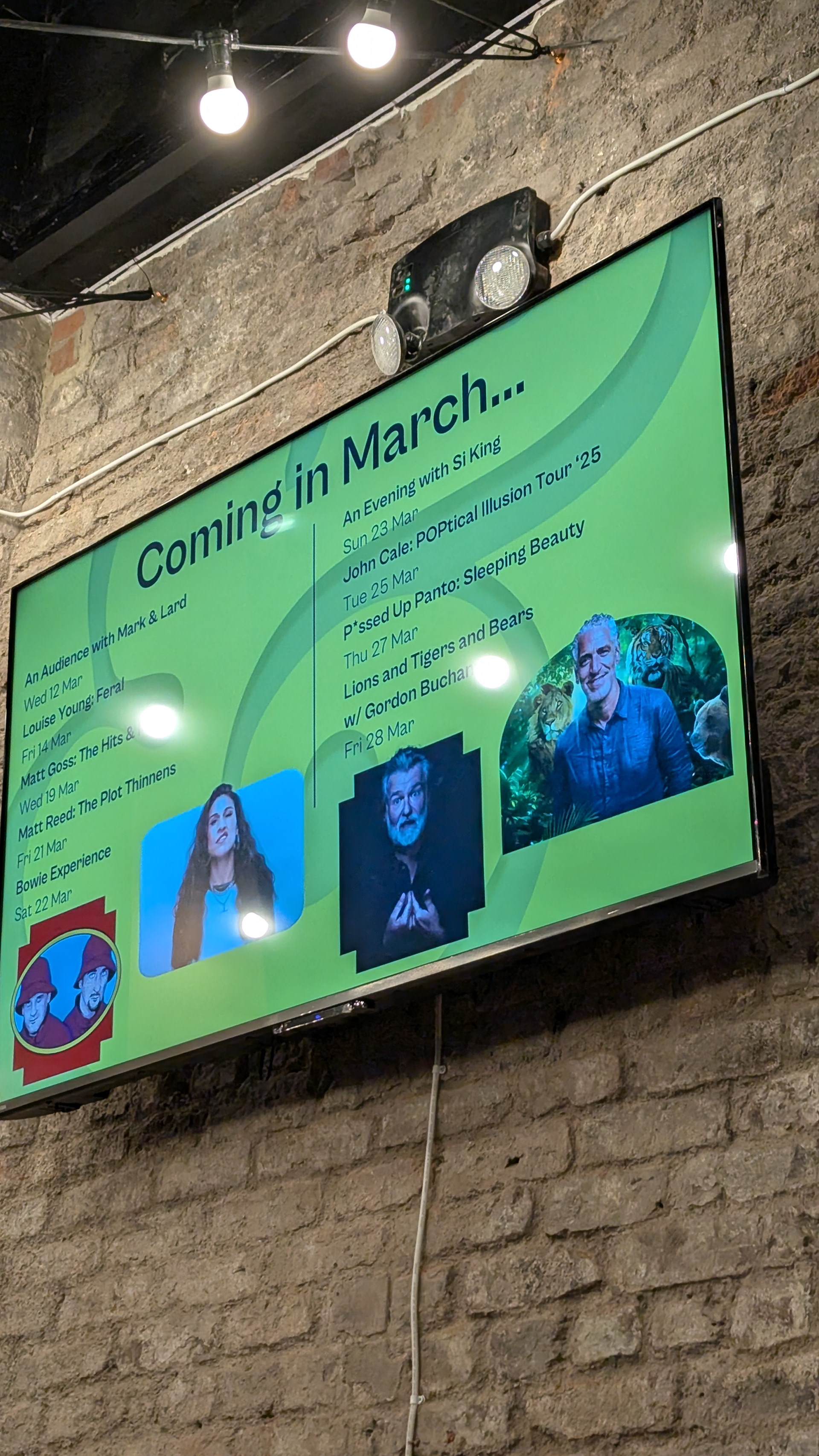
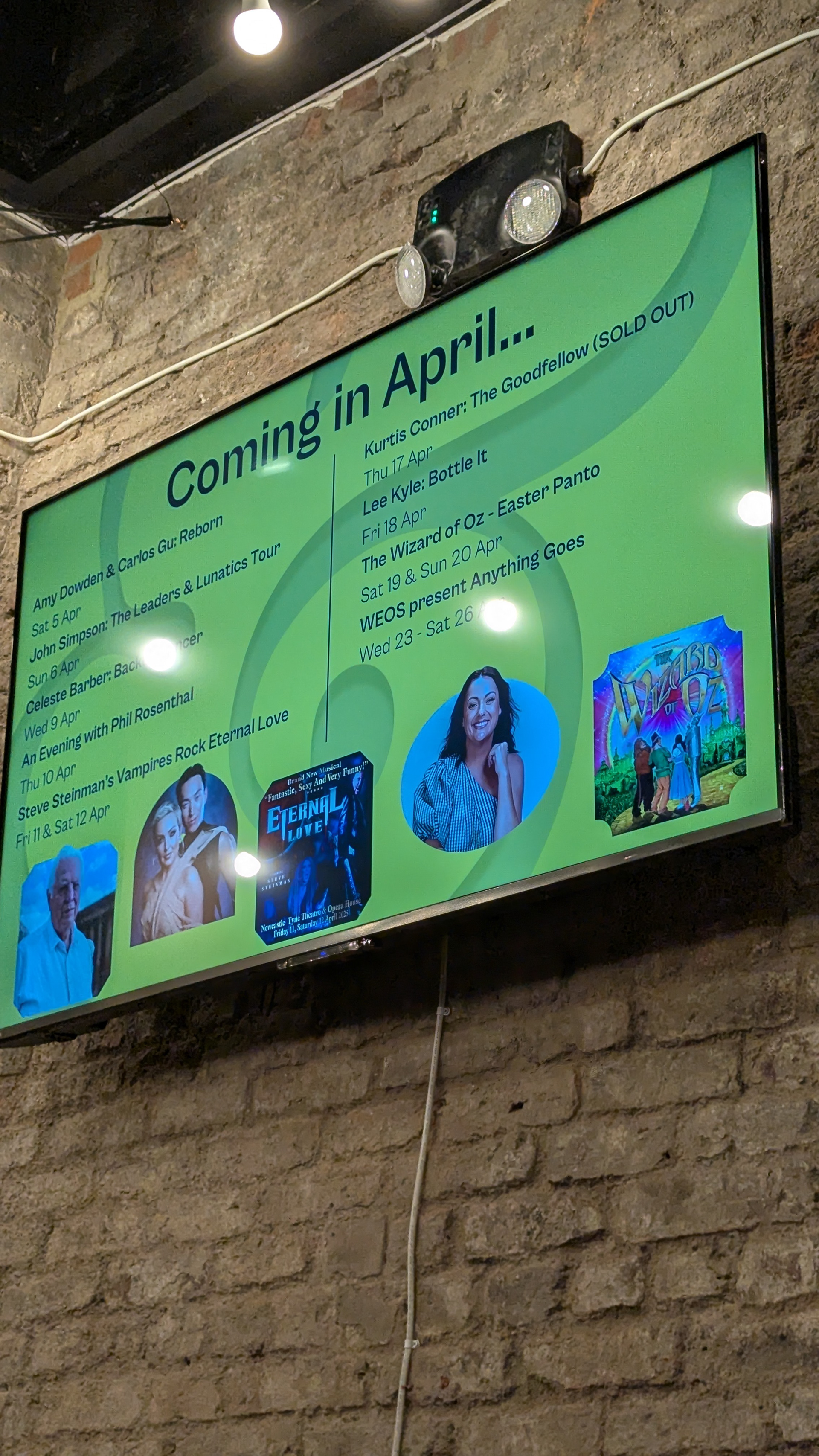
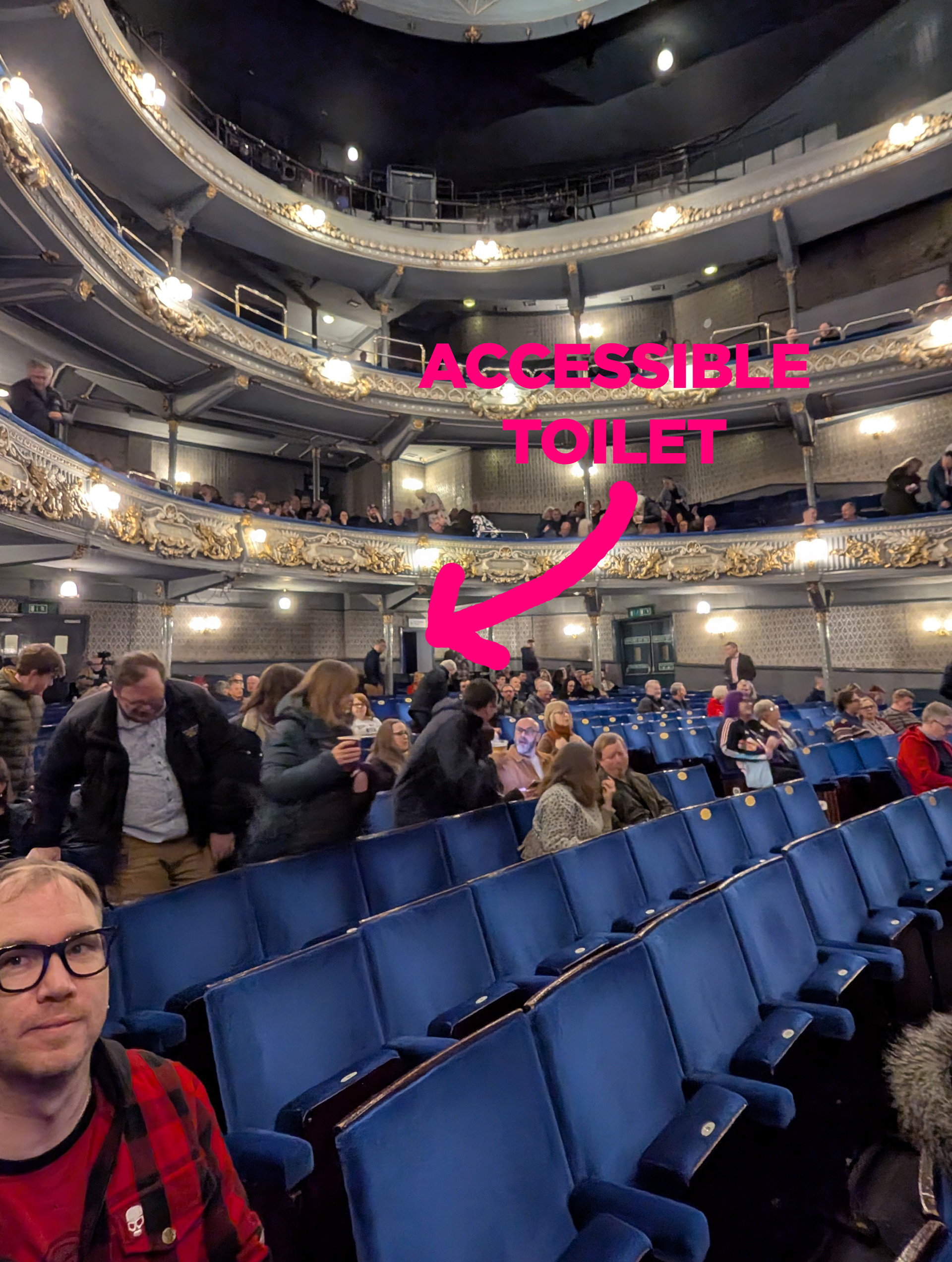
SEATING
There are only four wheelchair spaces in the stalls. There is a space at each end of rows C and D, so the positioning is excellent for your view of the show. However, being an old theatre, the walkways are narrow. The theatre seating is traditional fabric-covered folding seats with curved backs and limited legroom. The access page on the theatres’ website advertises the seats are 42cm wide between the armrests, which are not moveable. The seating rows have a central aisle running front to back but not left to right.
The wheelchair spaces on the end of the rows are only the size of a standard seat, which isn’t too much of a problem for my chair as it’s reasonably average-sized, but space is going to be an issue for chairs any larger. We were seated in row D, with my companion seated in seat eight and my wheelchair space classed as seat 7. On this occasion, there was no one in the wheelchair space in front of me, but even so, it’s difficult working out where to position yourself. Too far forward, and people can’t get past and into your row. Too far back, and people can’t get into the row behind you. Besides us, there were only another seven seats on our row before the aisle, and everyone was great with us, saying like, “You stay there, we’ll go the other way”, “don’t you be moving, it’s fine” “we’ll go in the other end” which meant I could keep forwards and avoid obstructing behind. This was great in the sense of blocking the row; however, I was still partially blocking the side aisle when people were heading to the bar or toilets, and the people who were using the middle aisle still had to come around past me or walk all of the way around the back of the auditorium. Add to that the arrival of the ice cream seller in the interval!
This area was open the last time we were here, with a door cutting back towards the bar. This time, it was curtained off and only opened to sell ice cream. Last time, I wheeled into this area to try and stay out of the way until everyone was in their seats, which wasn’t possible this time.
My view of the stage was unobstructed for the show.
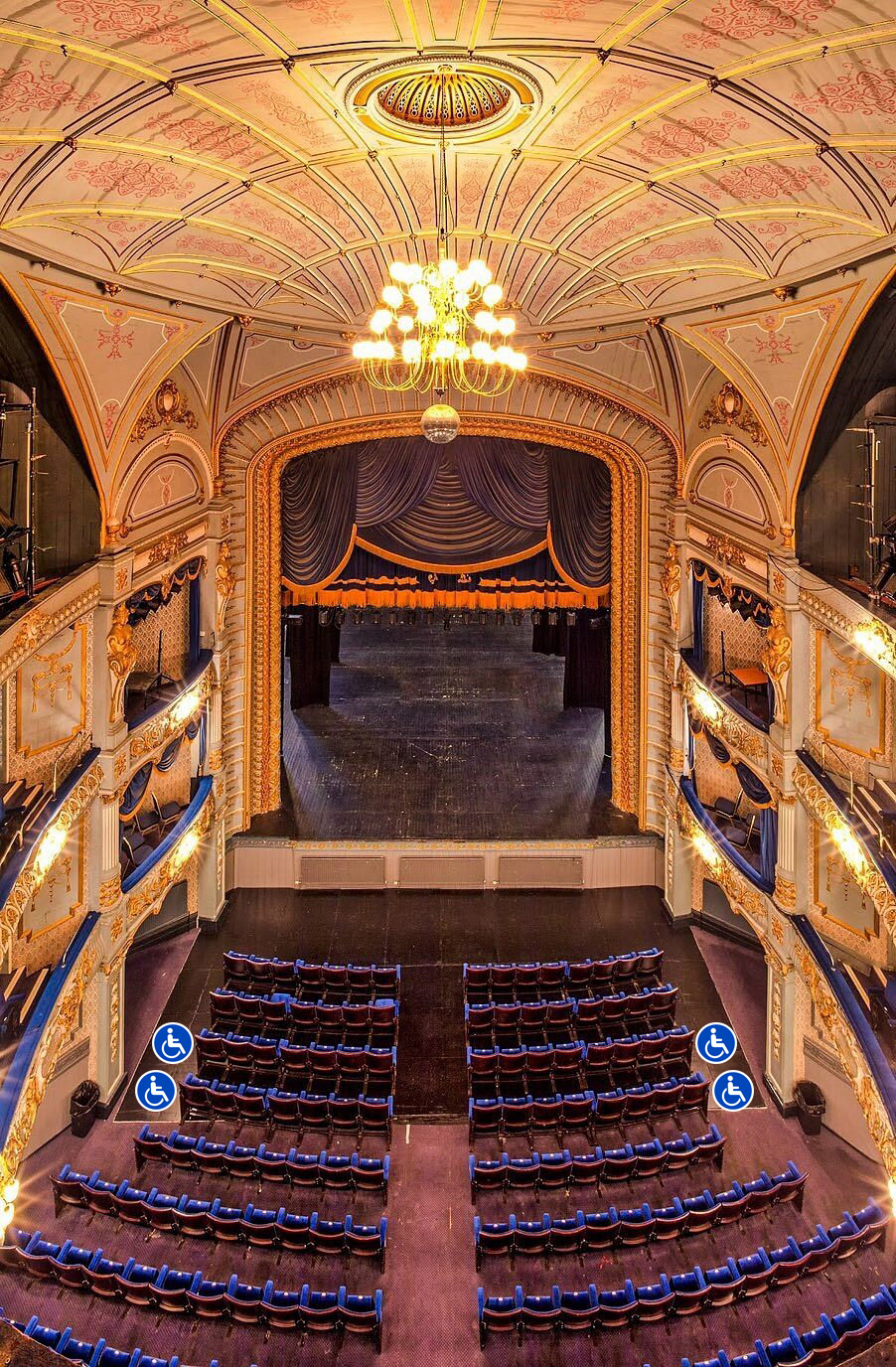
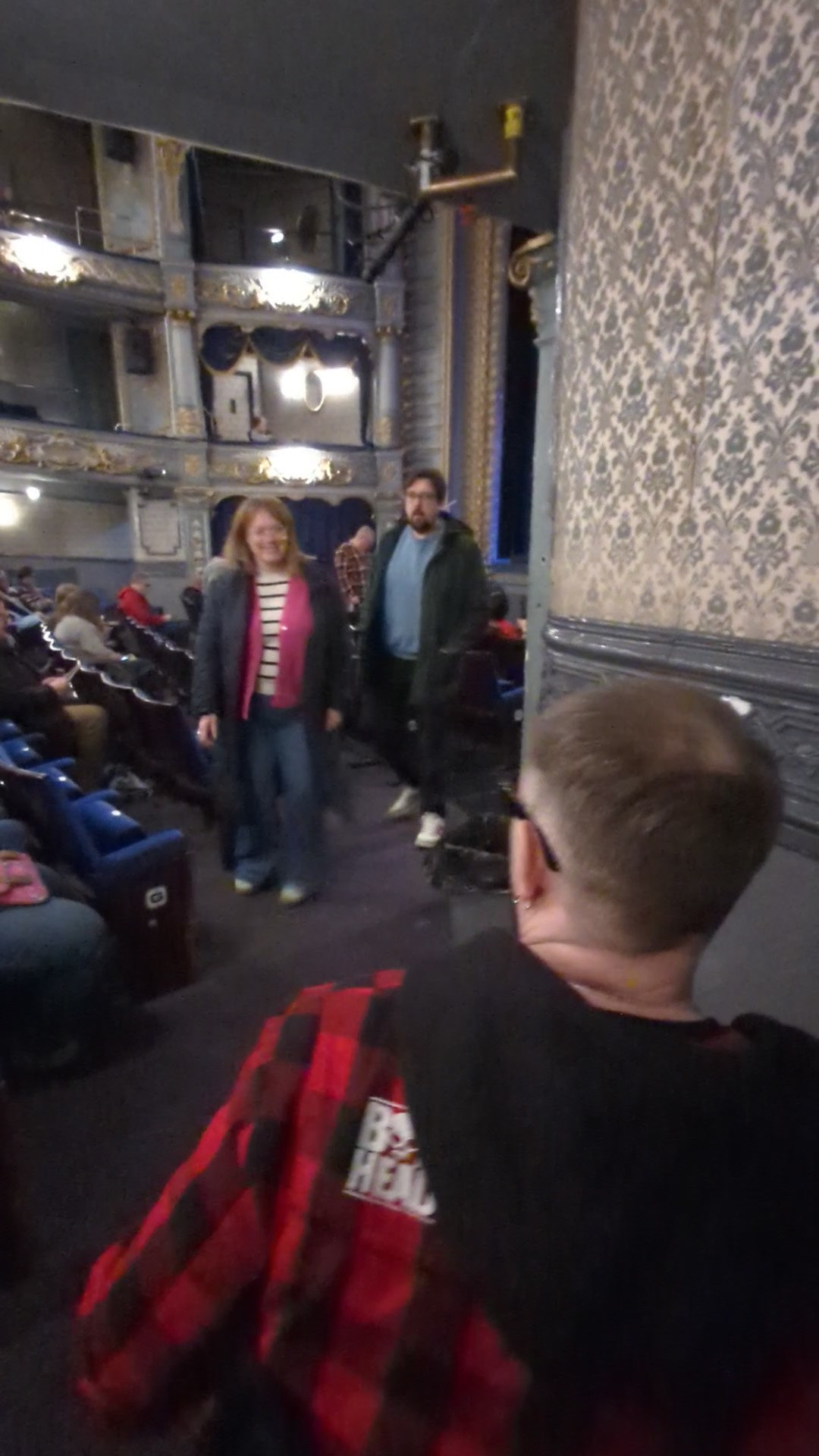
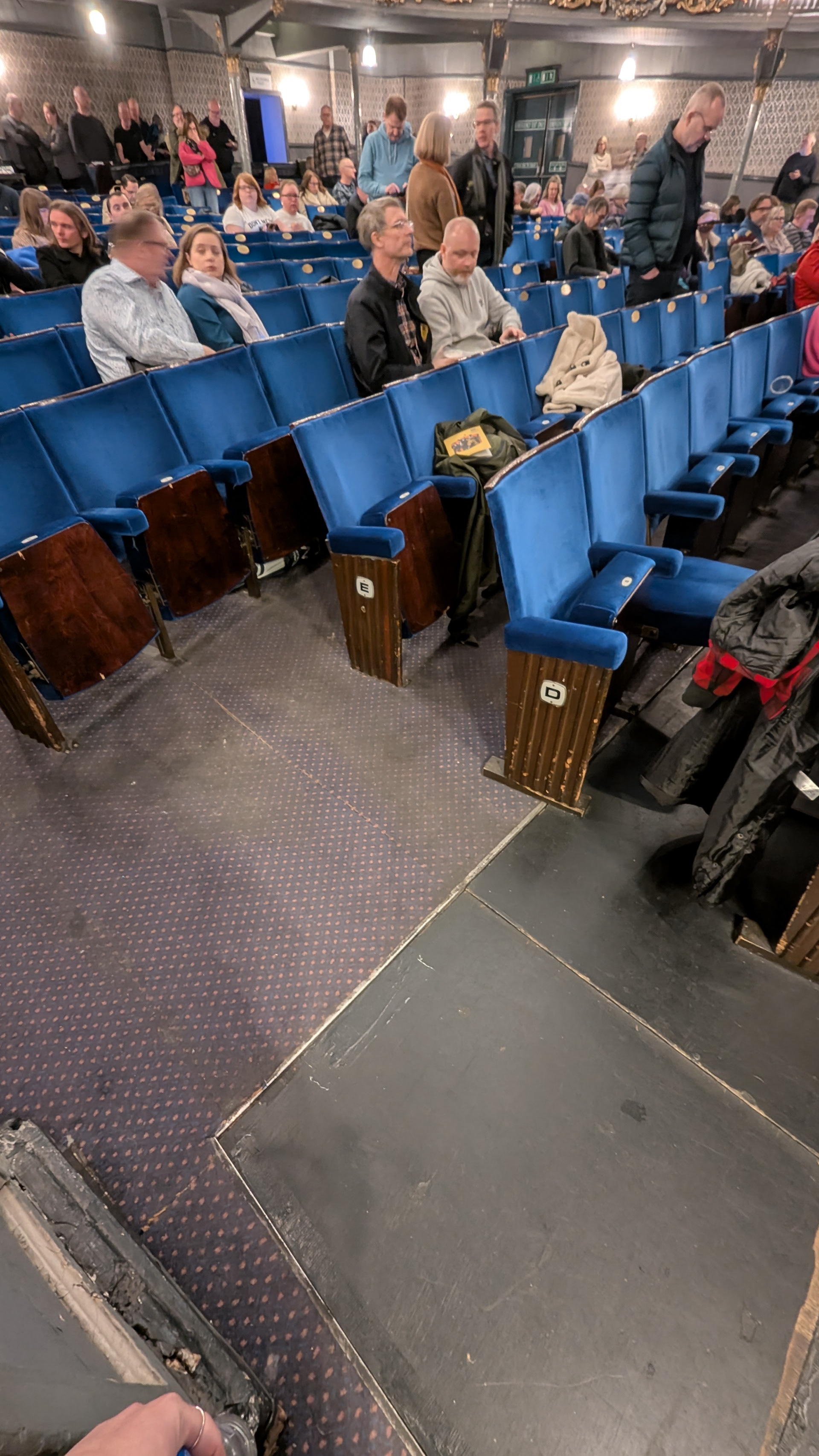
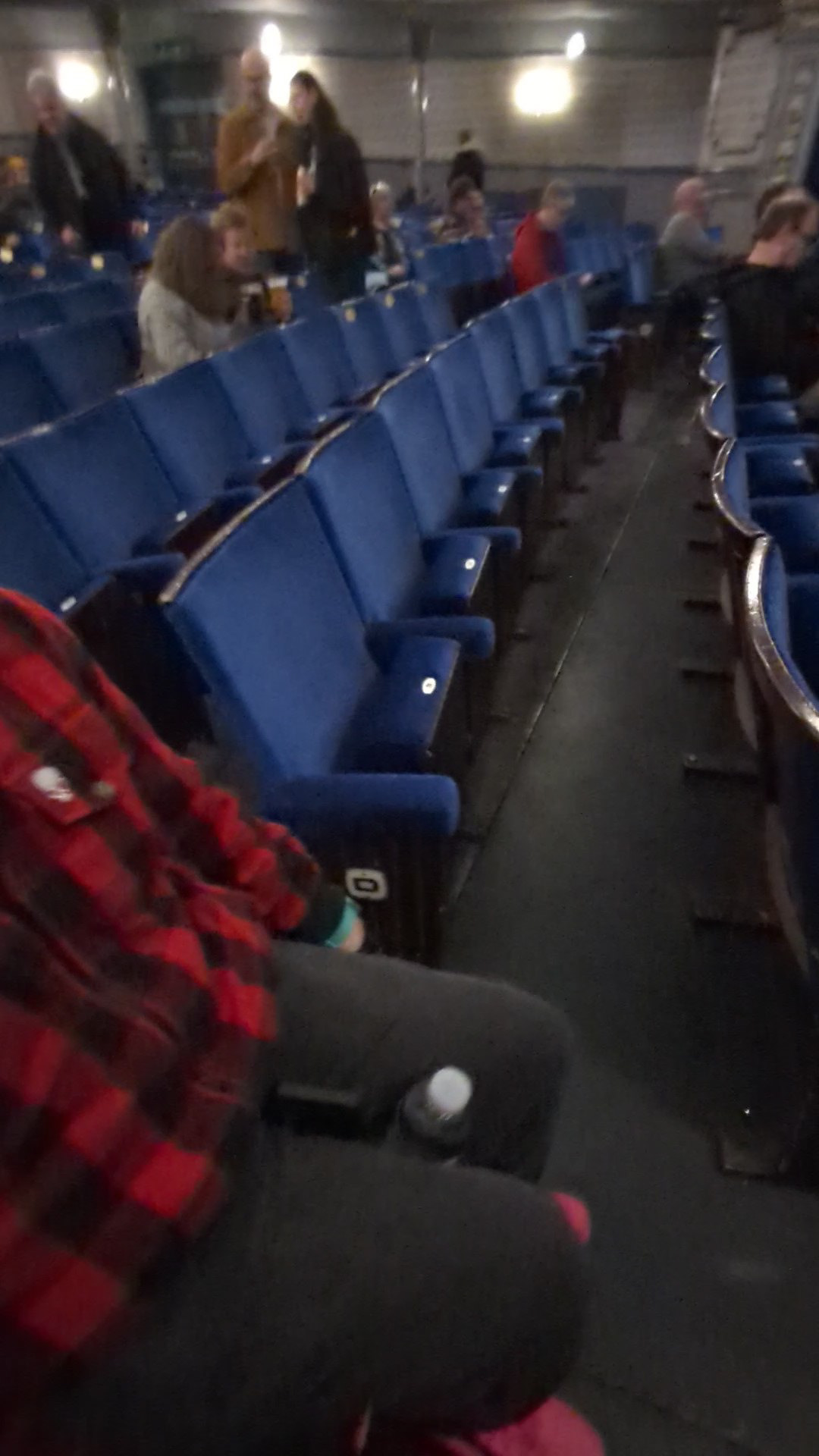
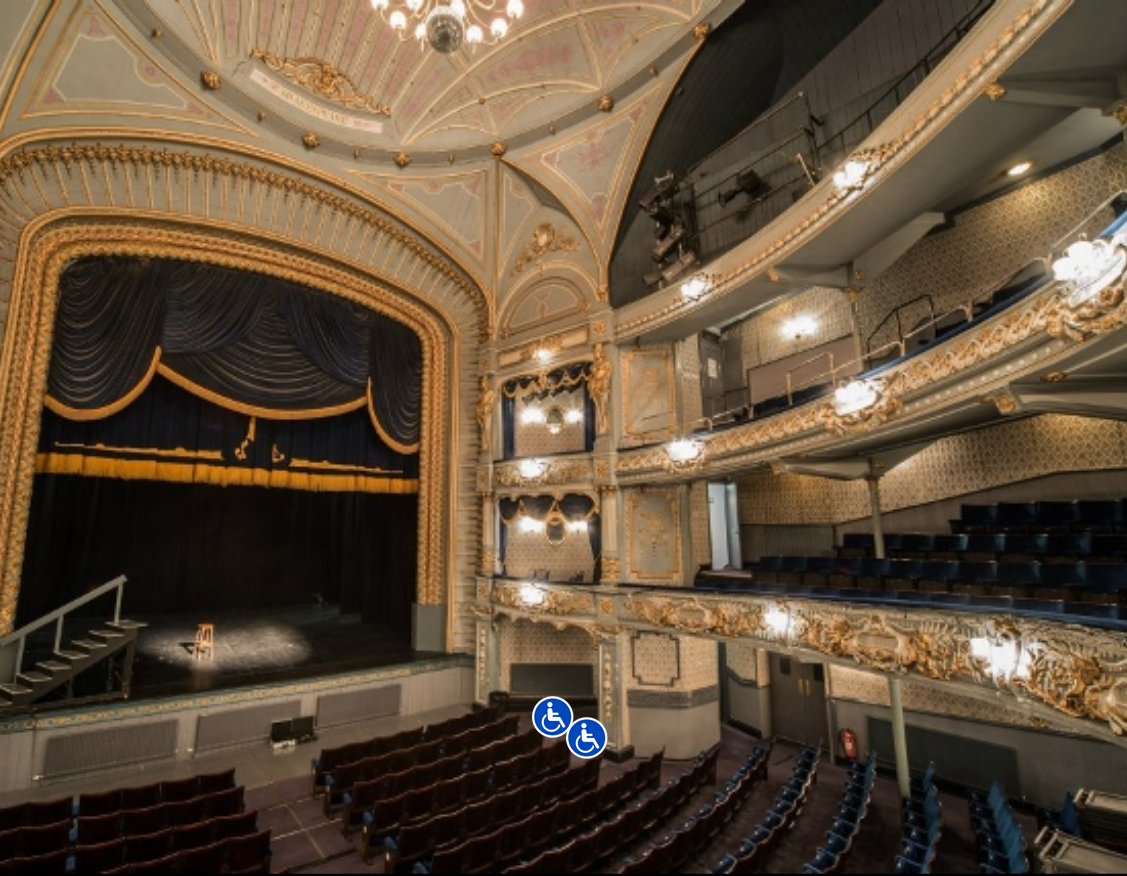
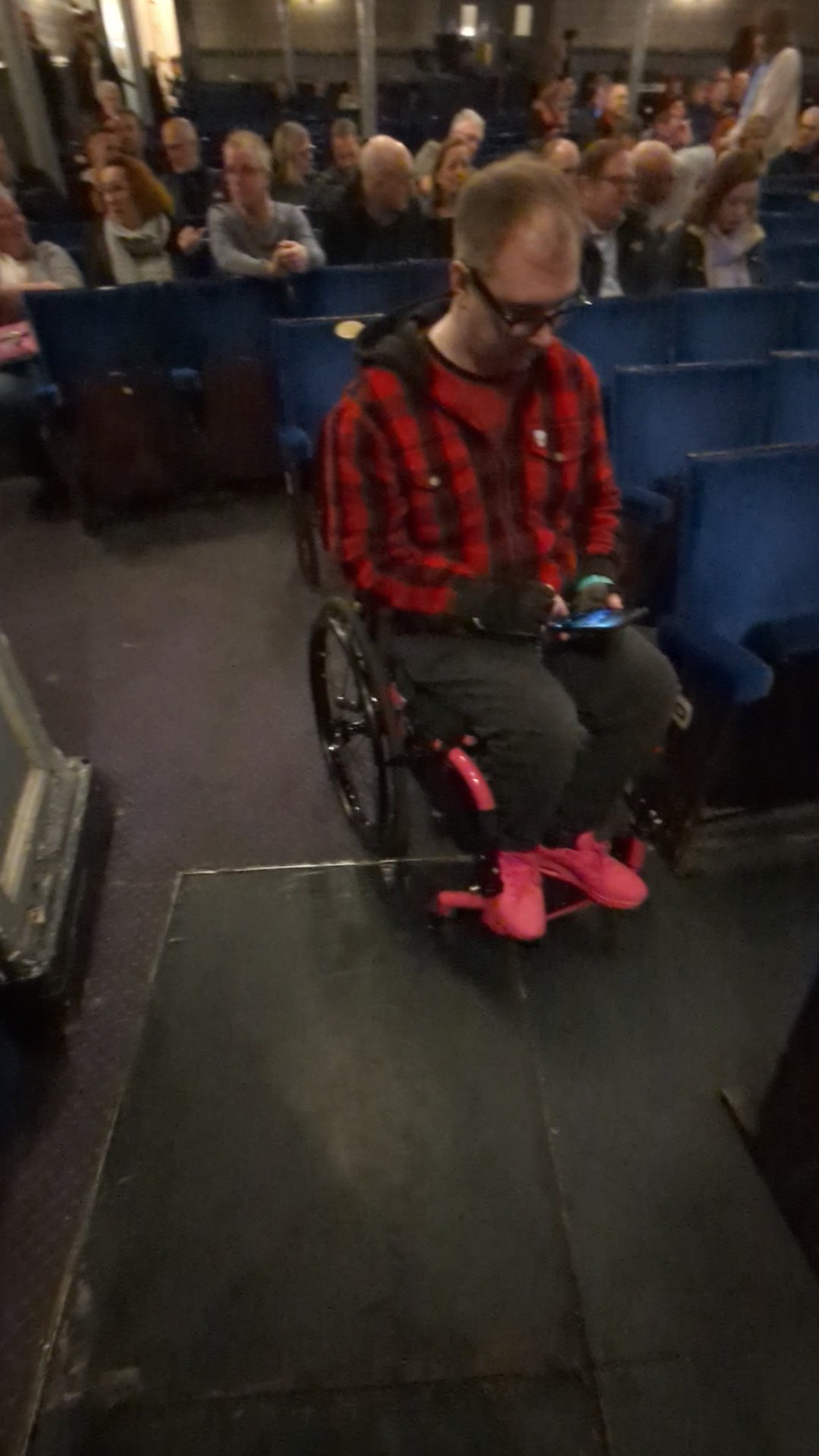
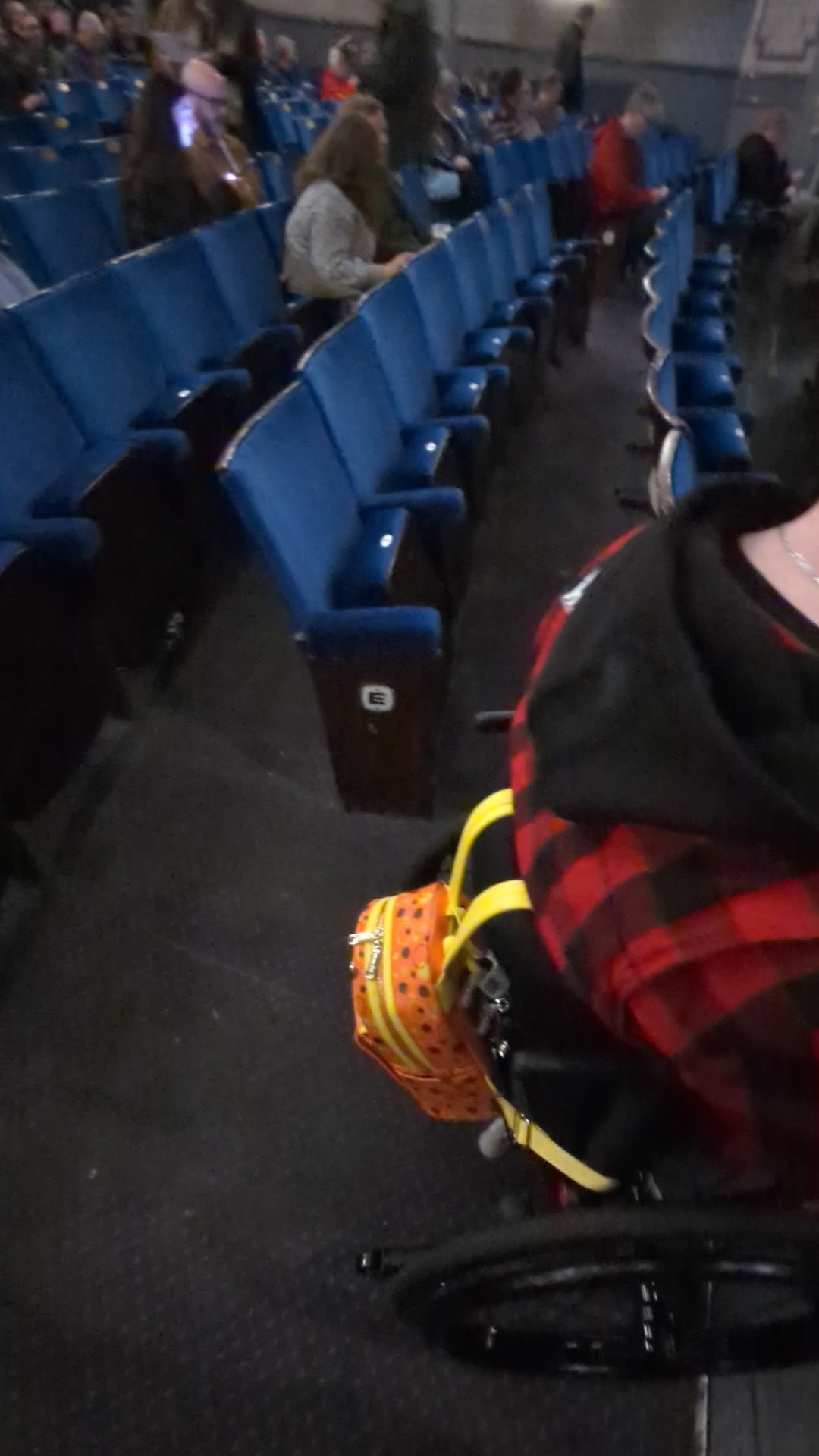
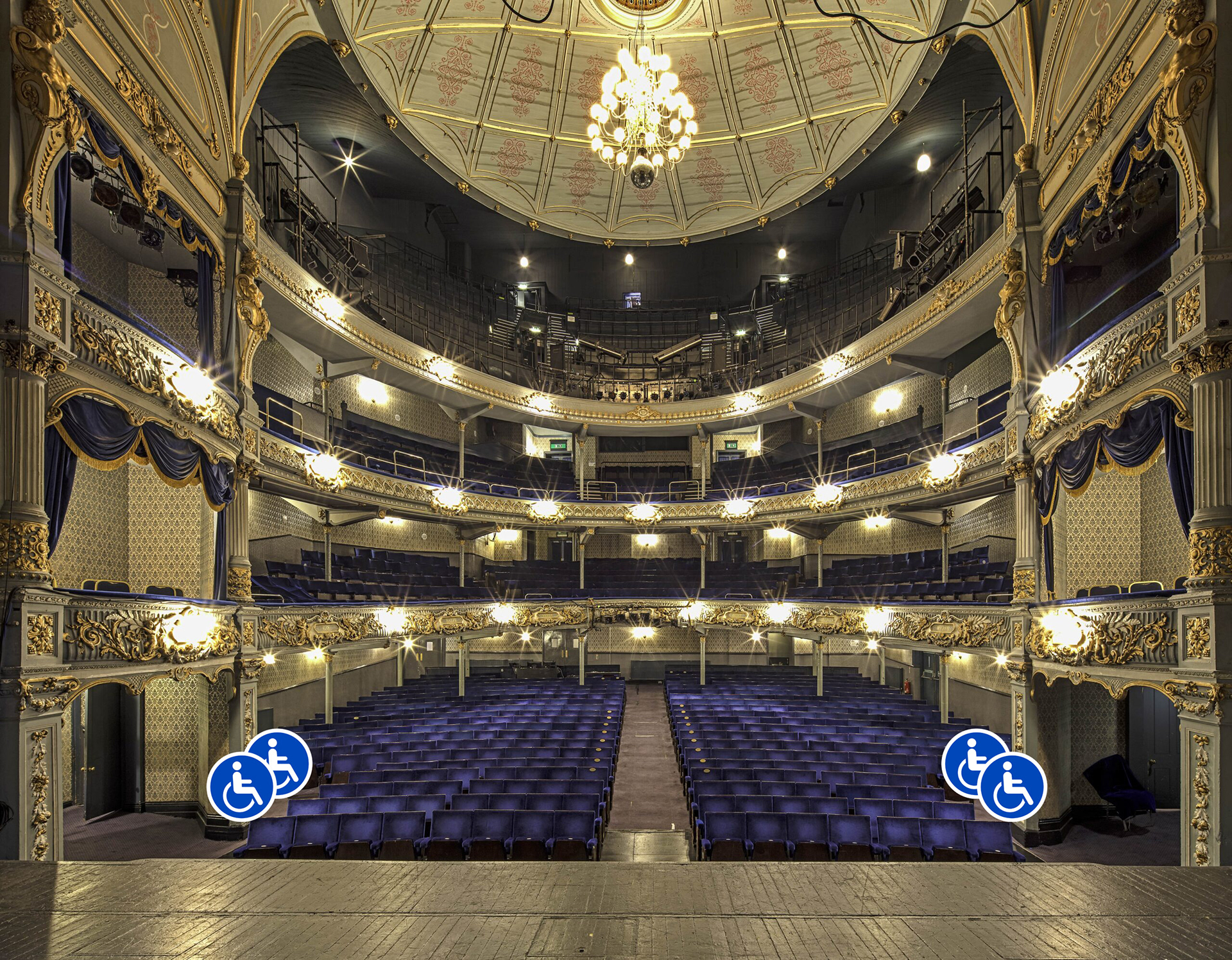
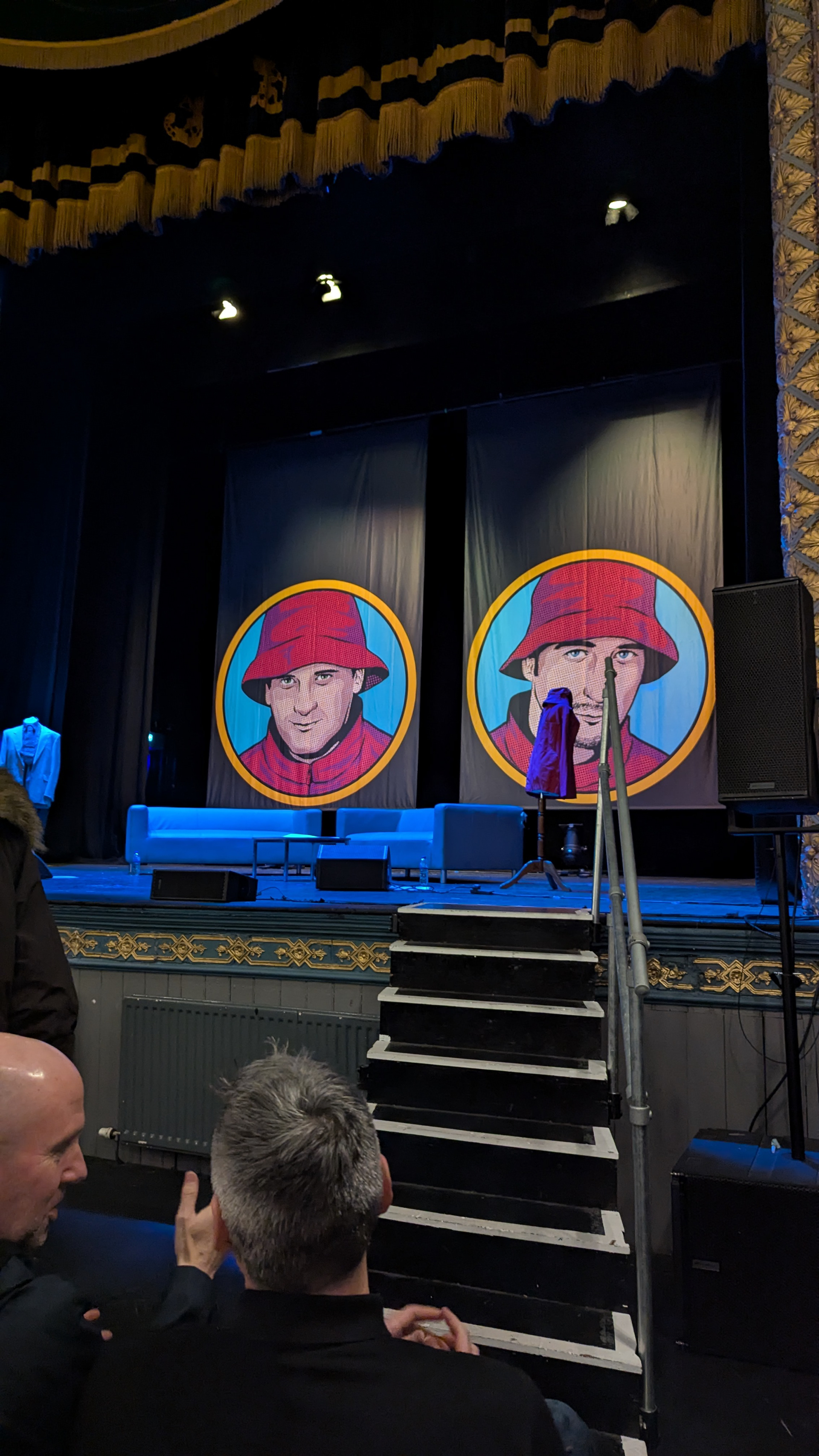
GETTING BACK OUT
Getting out was tricky. Some of the audience was exiting via the bar area, where they came in before the doors were open, so there was a flow going in that direction. I needed to move out of the way to let people pass, but I had nowhere to go. Further up the auditorium, people were heading to the door at the back where we came in. I wanted to use the toilet before I left, so I needed to make my way across the auditorium. I’d planned on wheeling to the front of the auditorium, across the front of the stage, up the far side, where it might be quieter, and making a direct line for the toilet. It was a great idea, but this show featured two small sets of stairs up to the stage, which made it a bit tight to get around and halted that idea.
Towards the back of the auditorium, people started stepping aside to let me get to the door, but I was heading in the opposite direction to the toilet. Staff offered to clear a way through for me, but it ended up being easier to pull to the side, let everyone else out to the exit, and then go where I needed to.
By the time I was done, the foyer was empty, so it was easy to wheel out of the door that I came in and back towards the car.
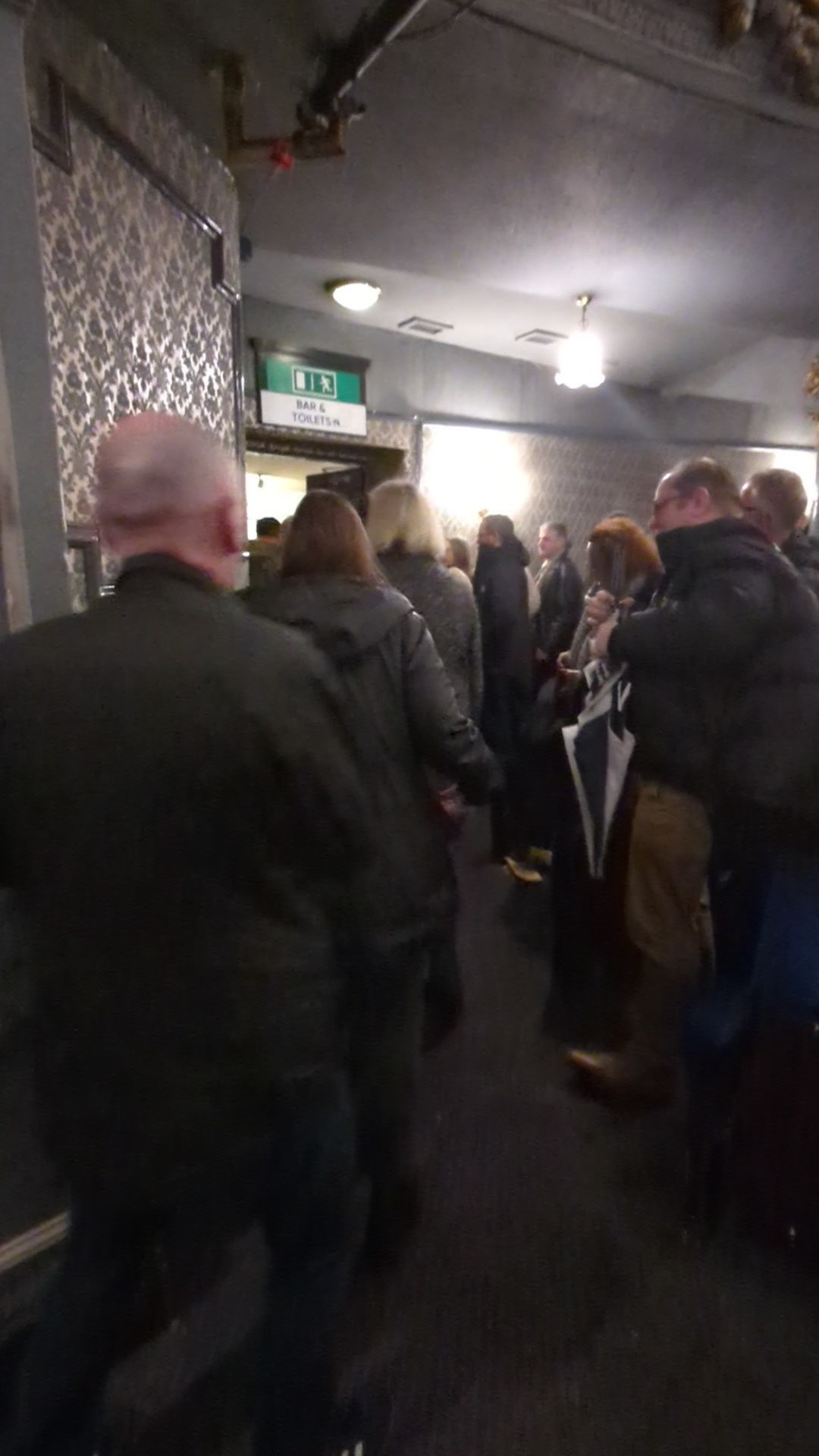
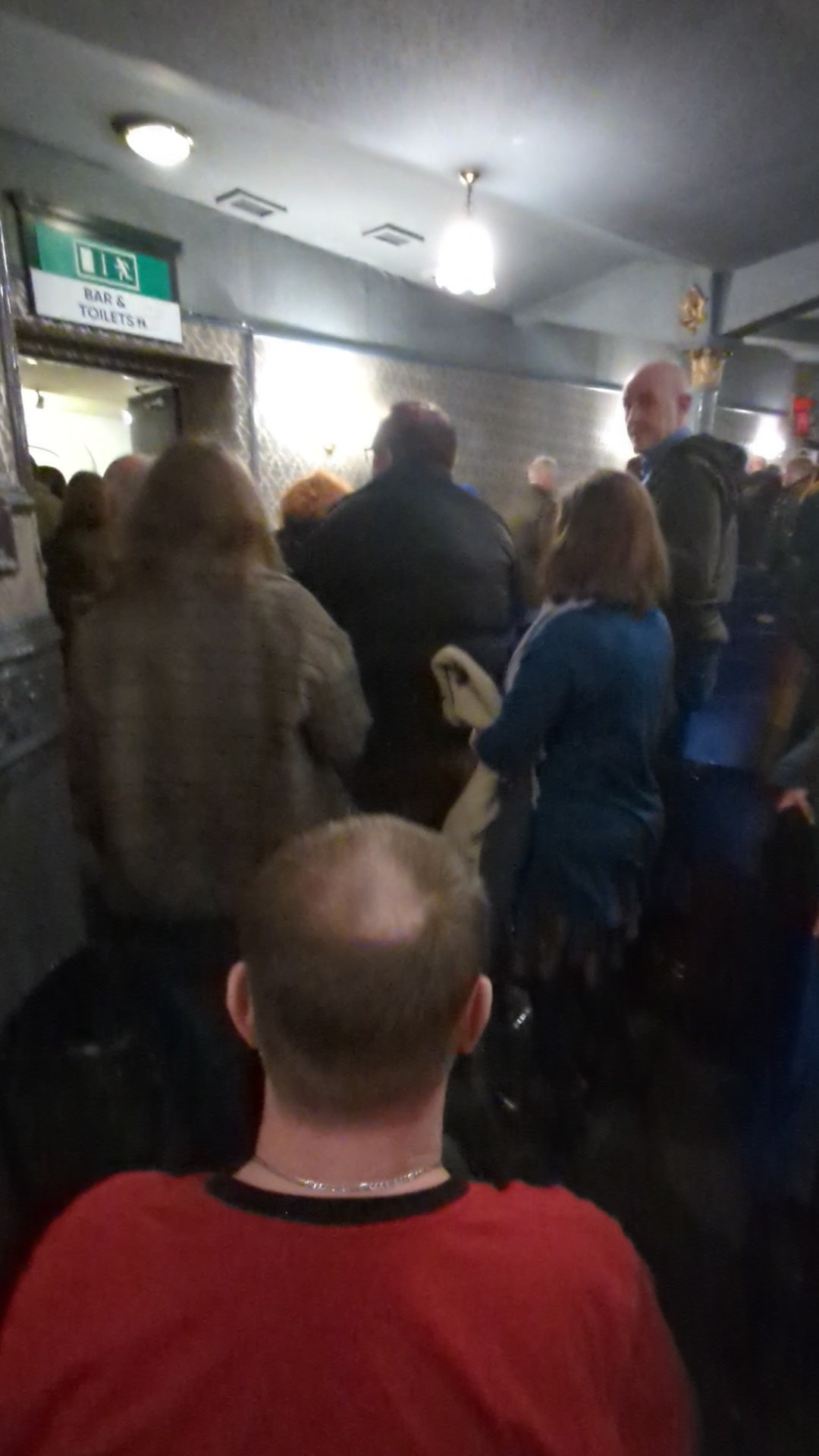
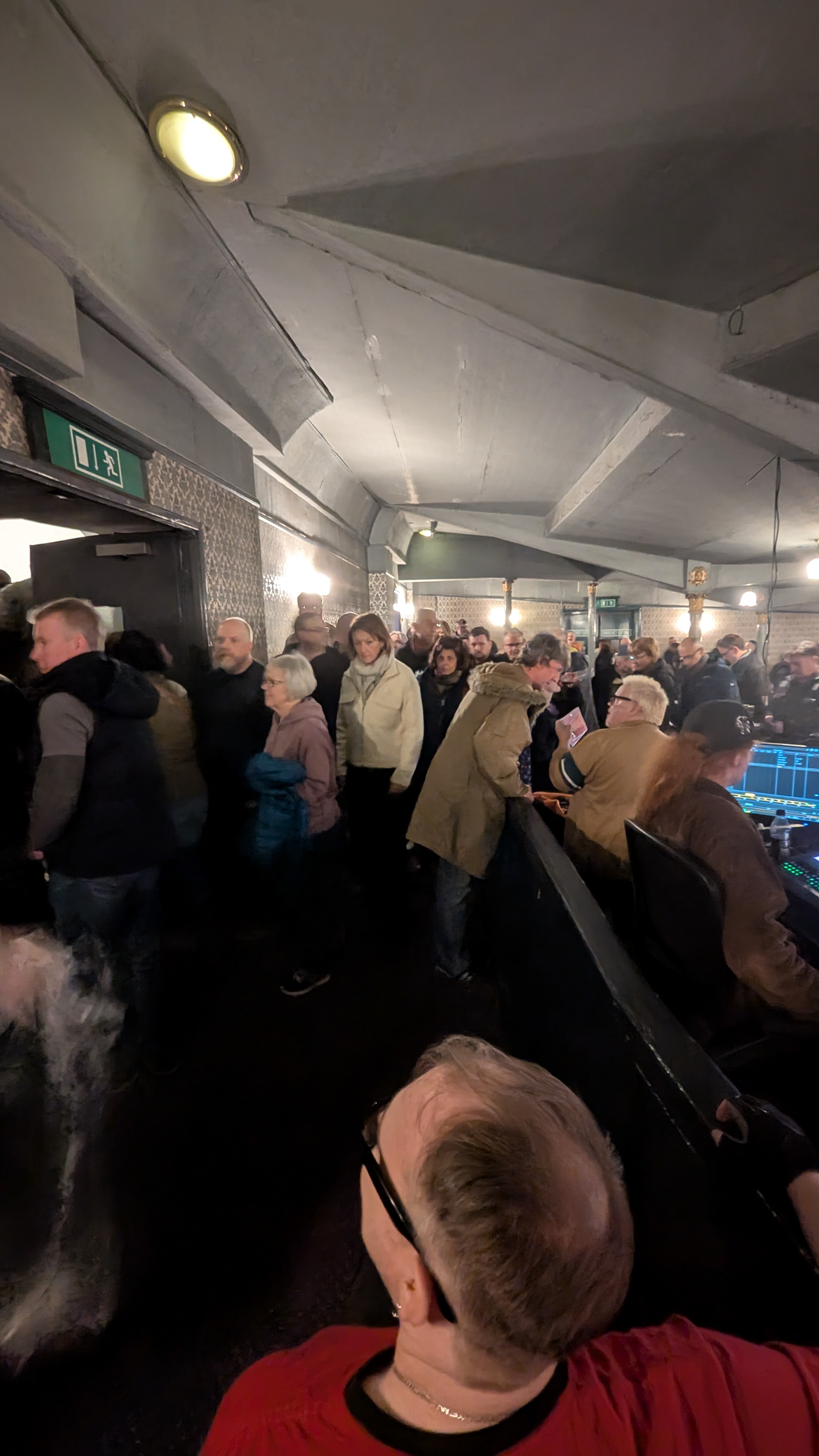
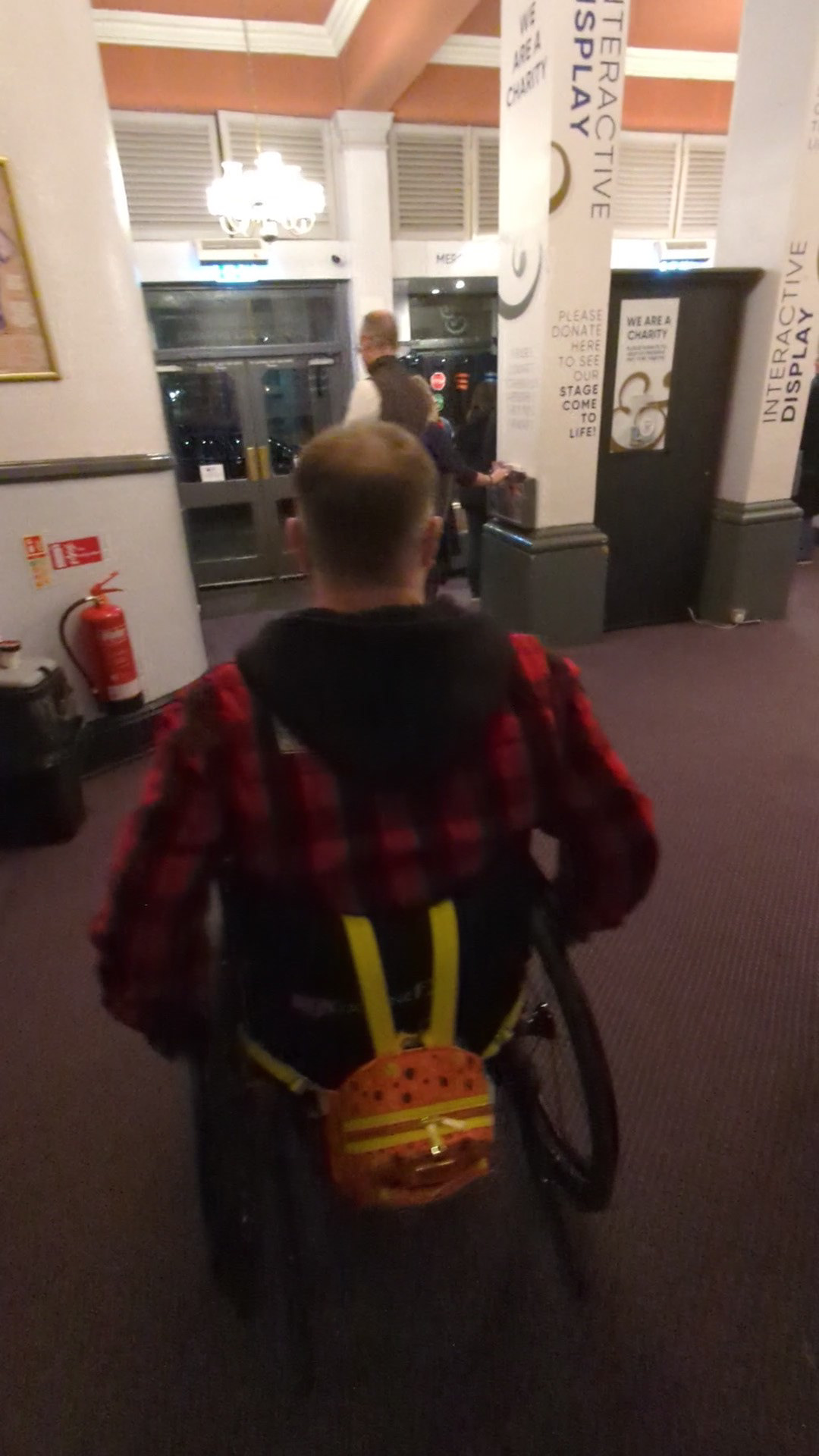
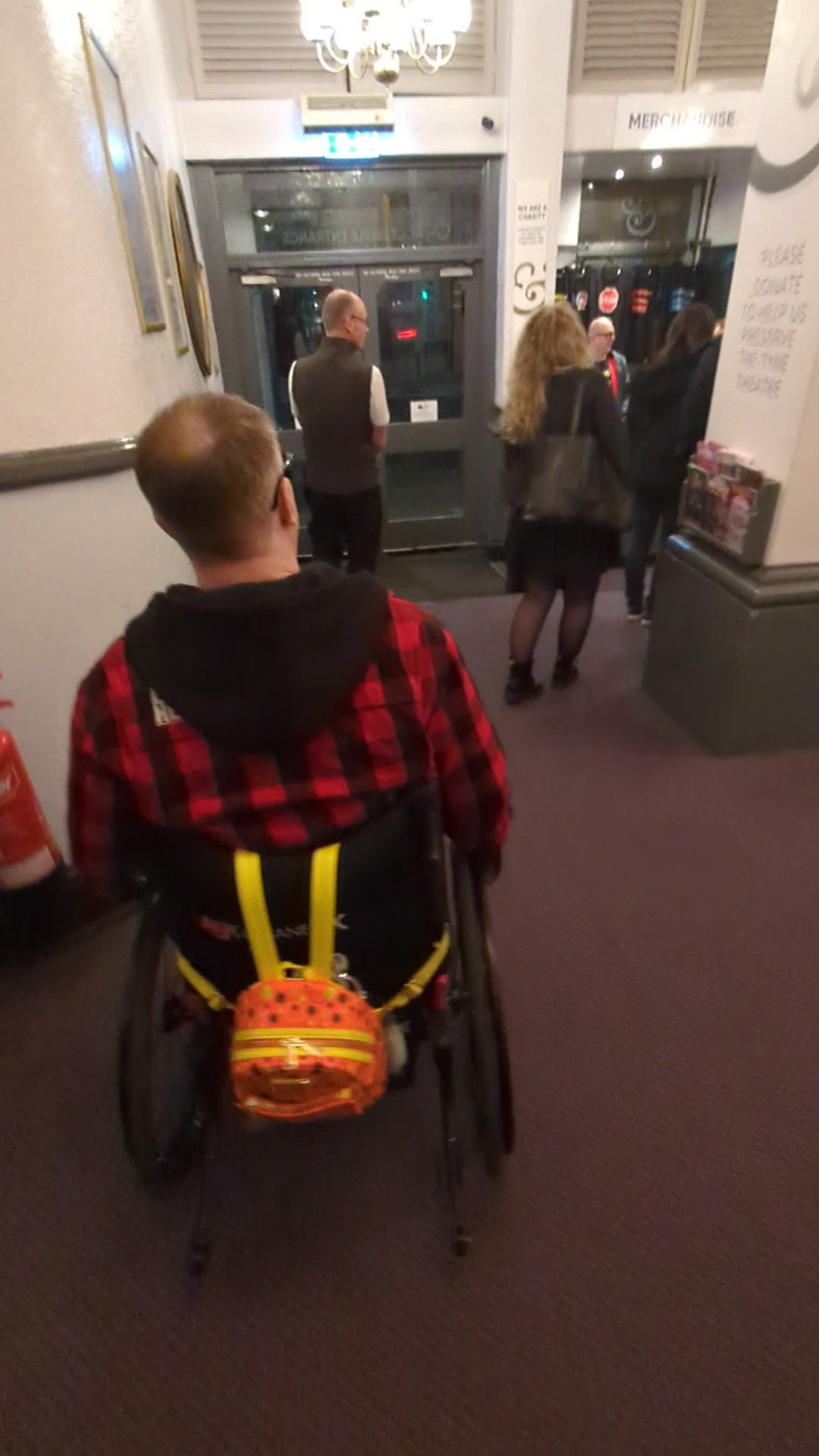
OVERALL EXPERIENCE
It is a beautiful theatre with helpful staff.
It’s a shame there hasn’t been more consideration for access requirements in the bar area and cafe.
It would benefit from an additional accessible toilet, but I can appreciate things like that are complex in such old buildings. It’s excellent that they have the level of accessibility that they do, though!
Something you might want to consider is when you arrive at the theatre - if you don’t like feeling that you’re in the way and want to use the toilet as and when you want, I’d recommend arriving only 15 minutes before the show. This gives other audience members time to get to their seats, and then you can wheel into position and not disturb anyone. At the same time, though, don’t arrive too late because if your ticket is in row C and there’s already a wheelchair in row D, it might take a bit of toing and froing to get you both into position.
